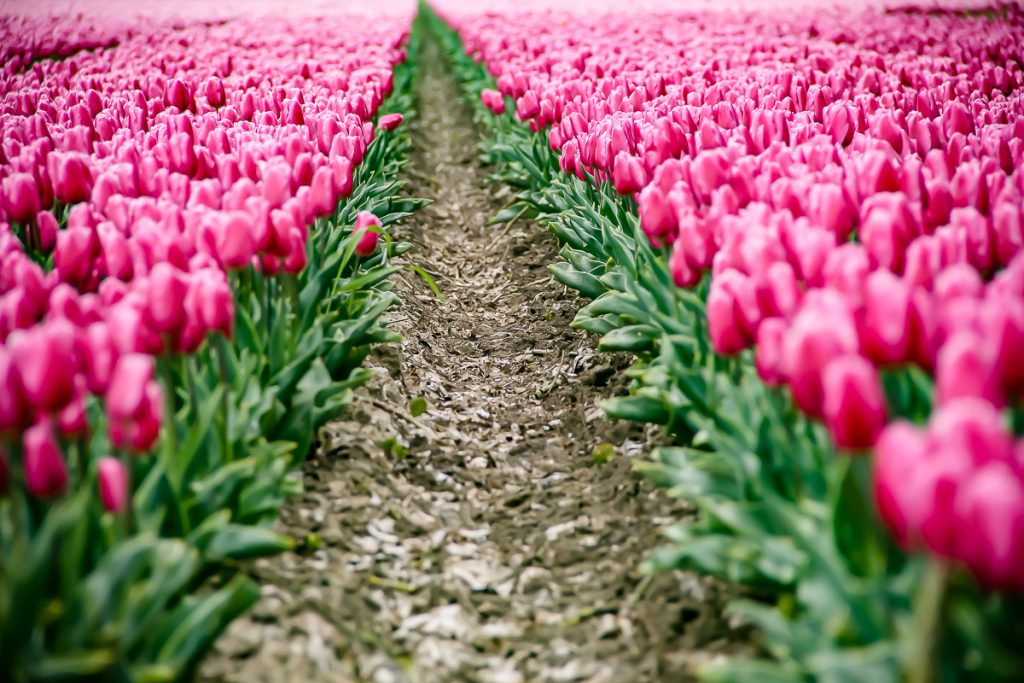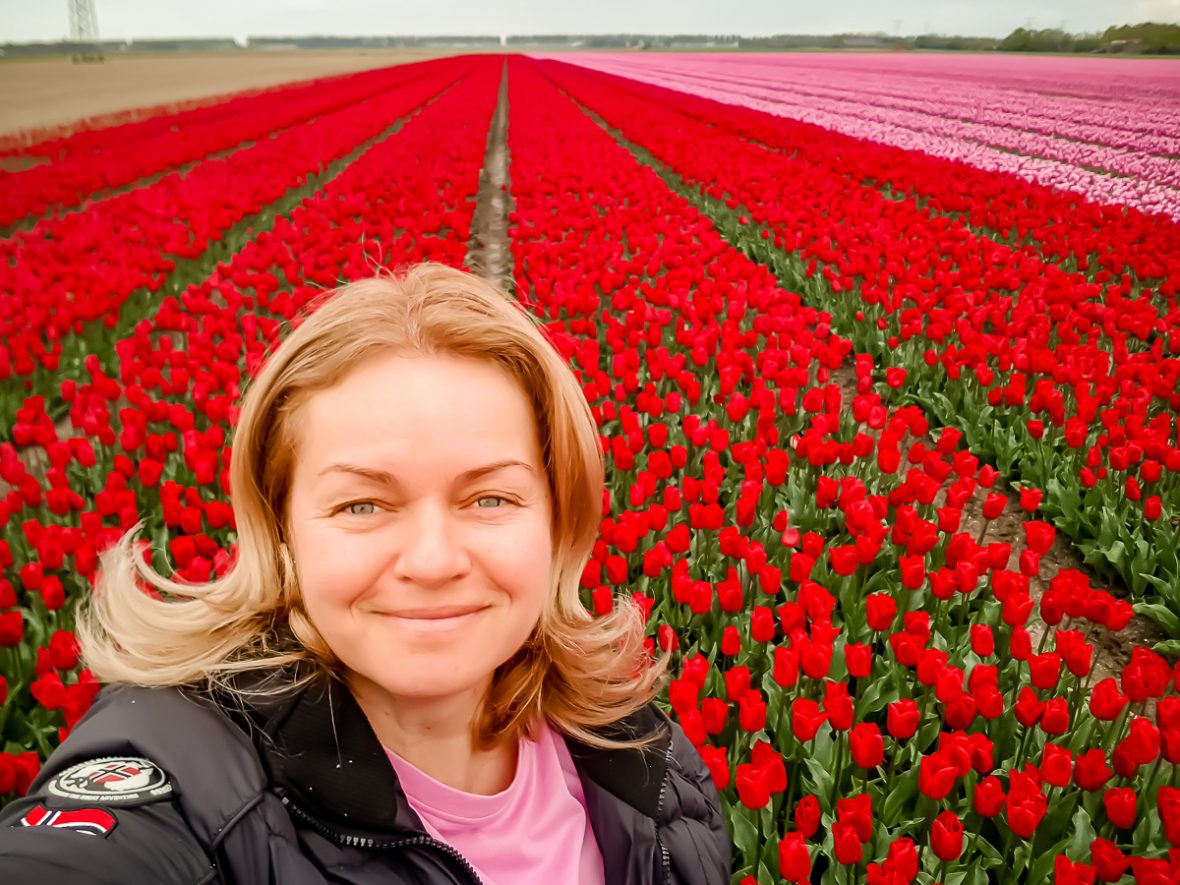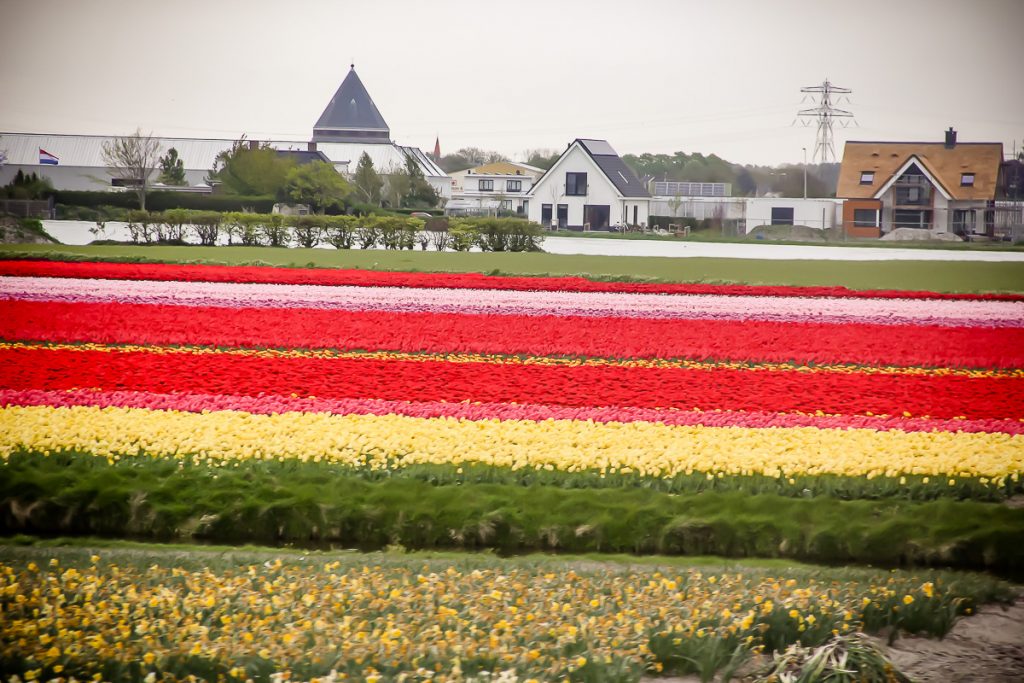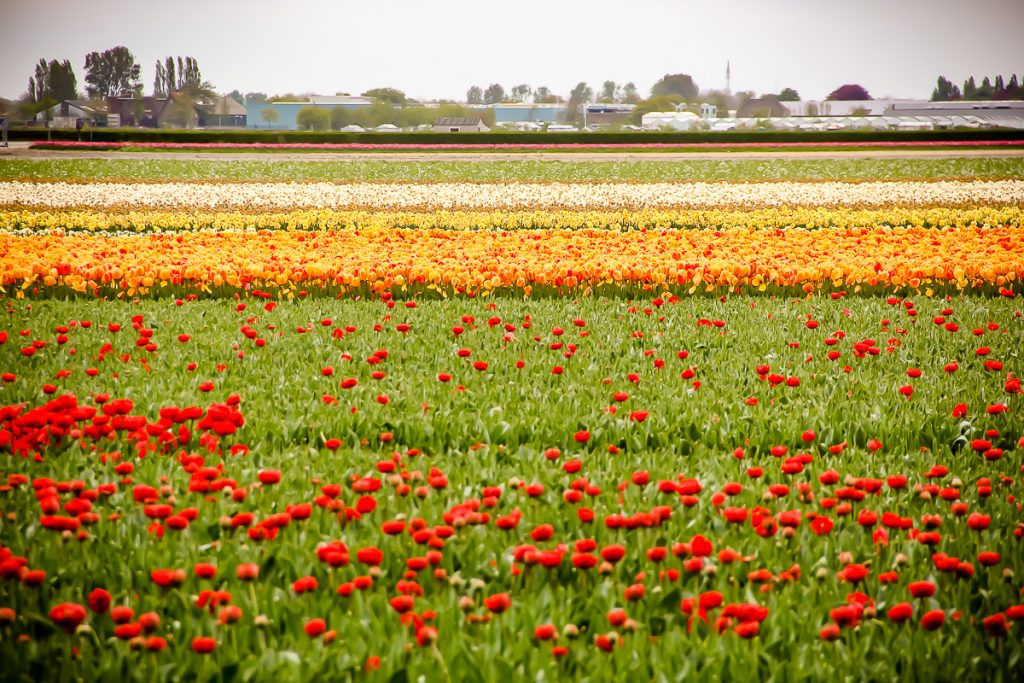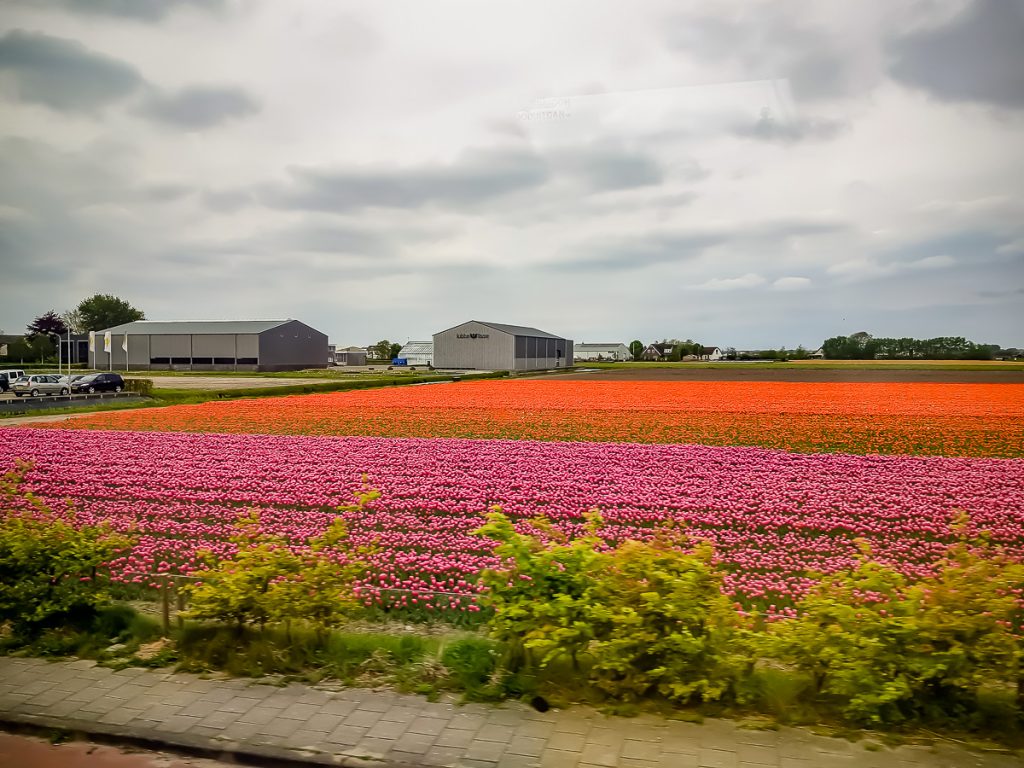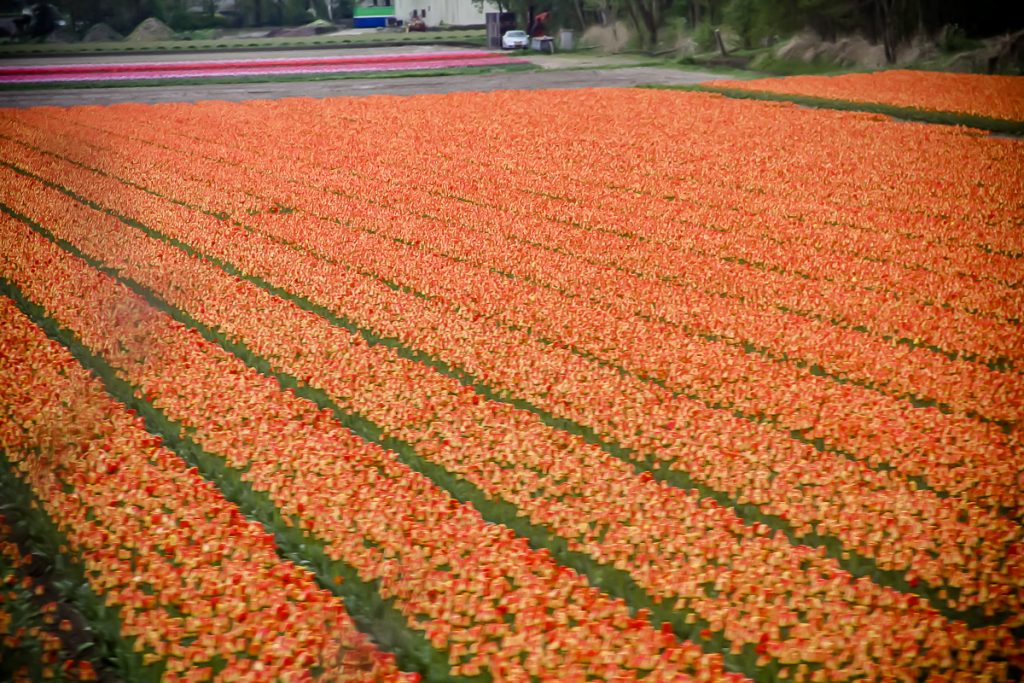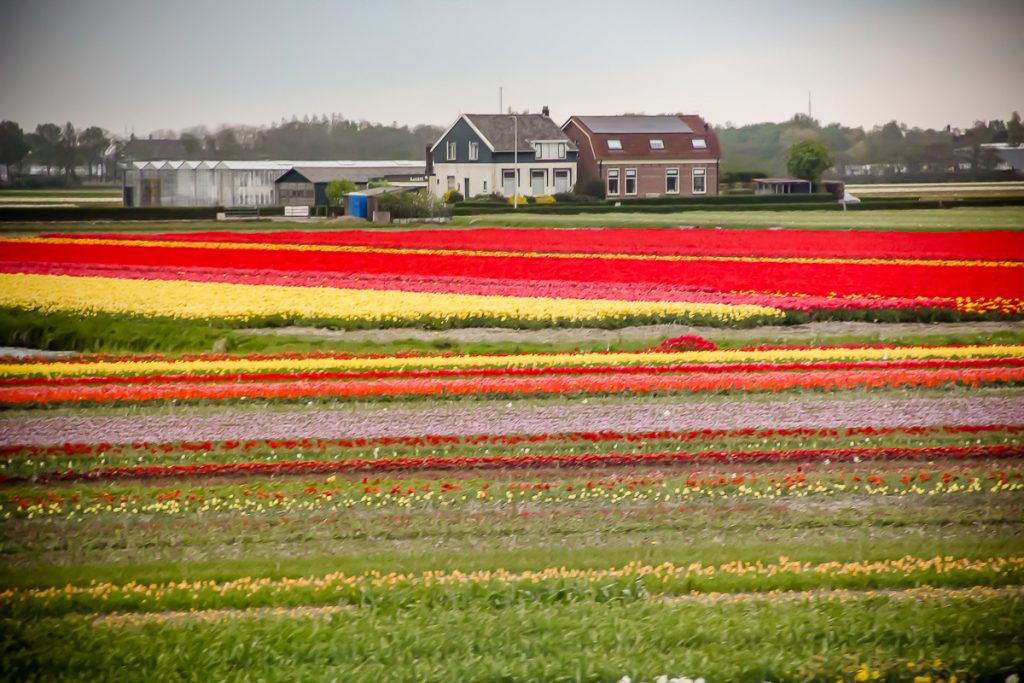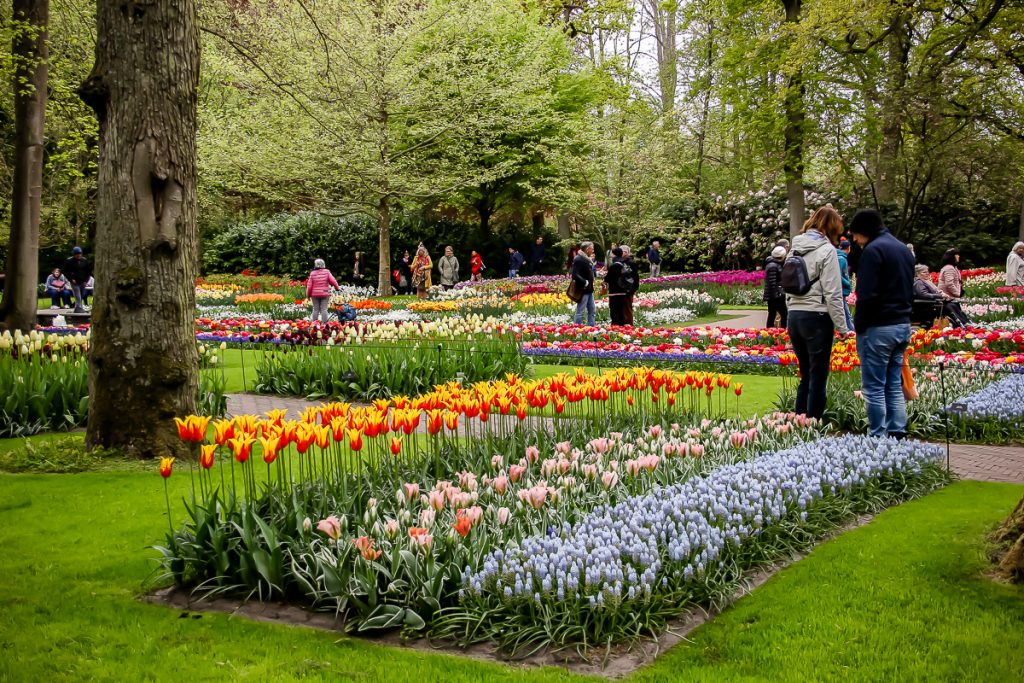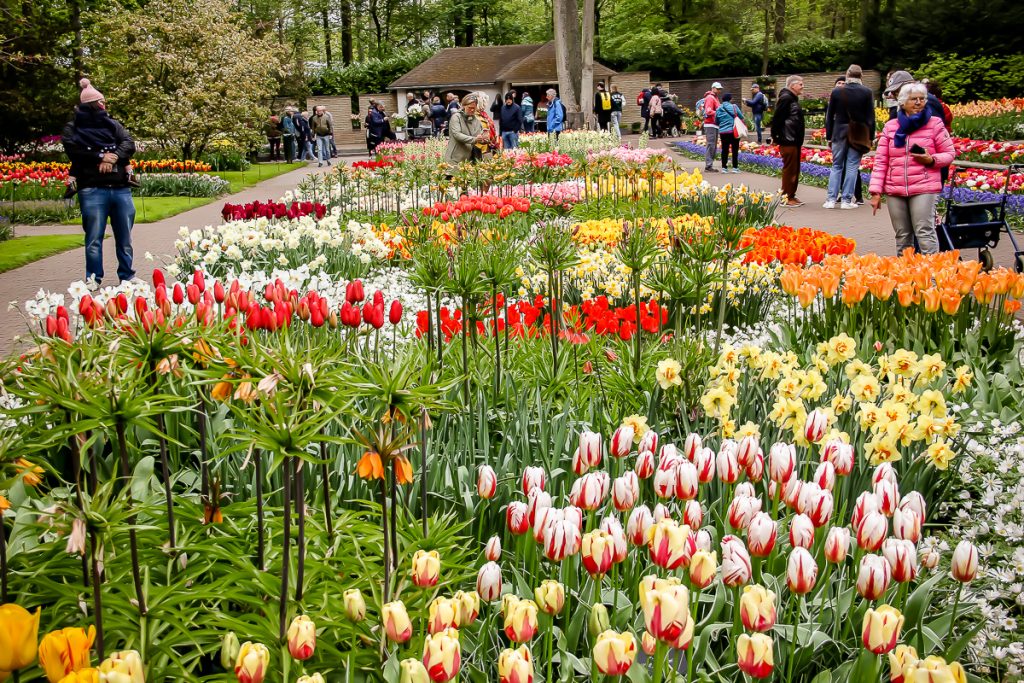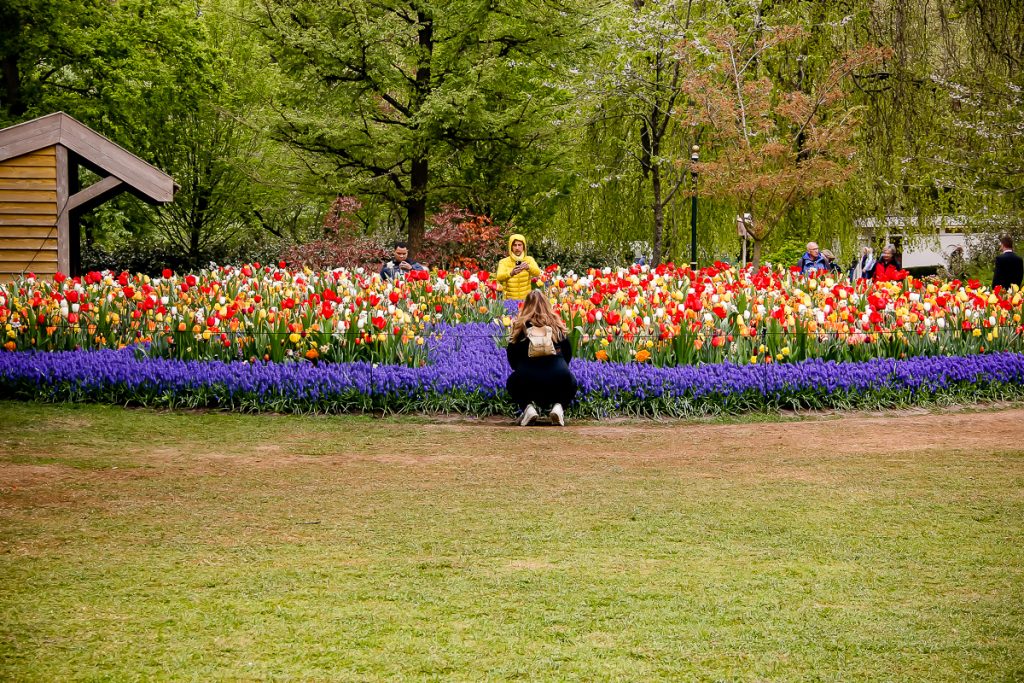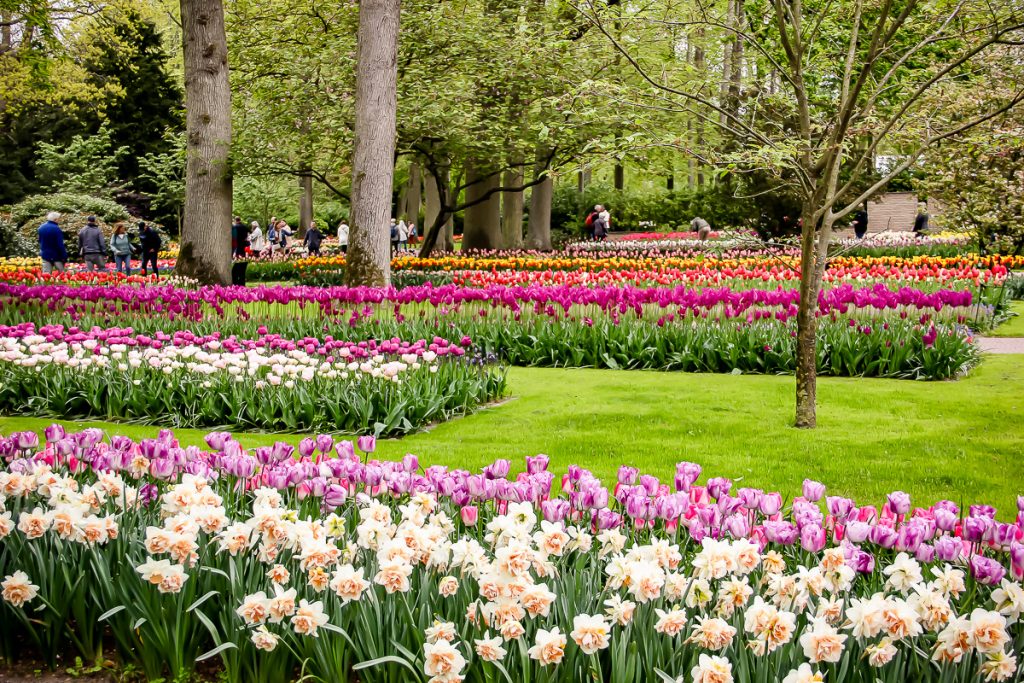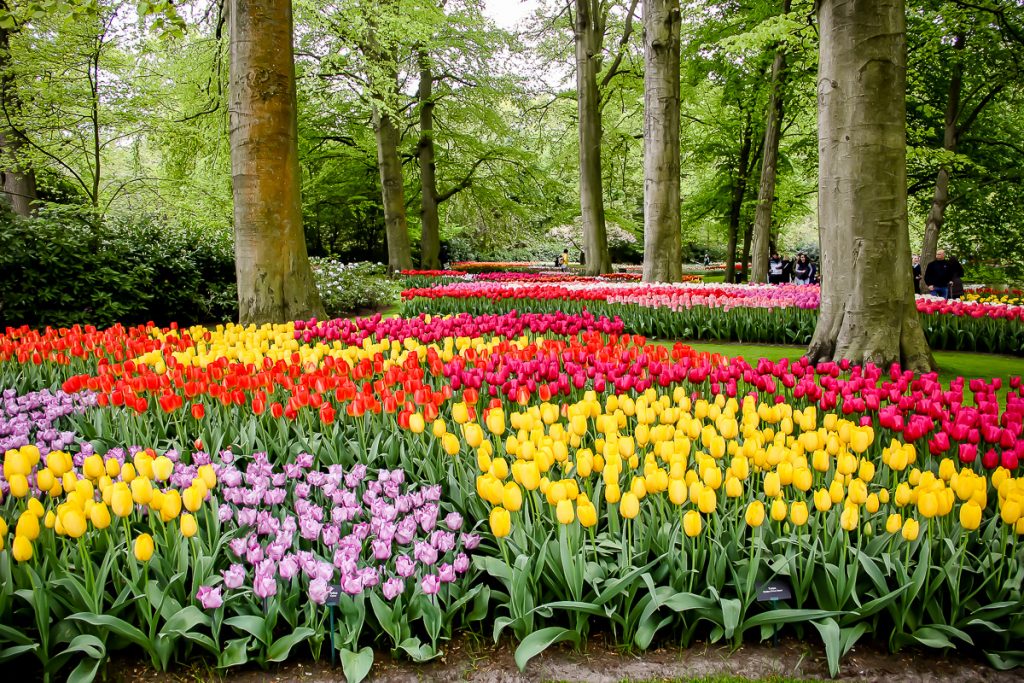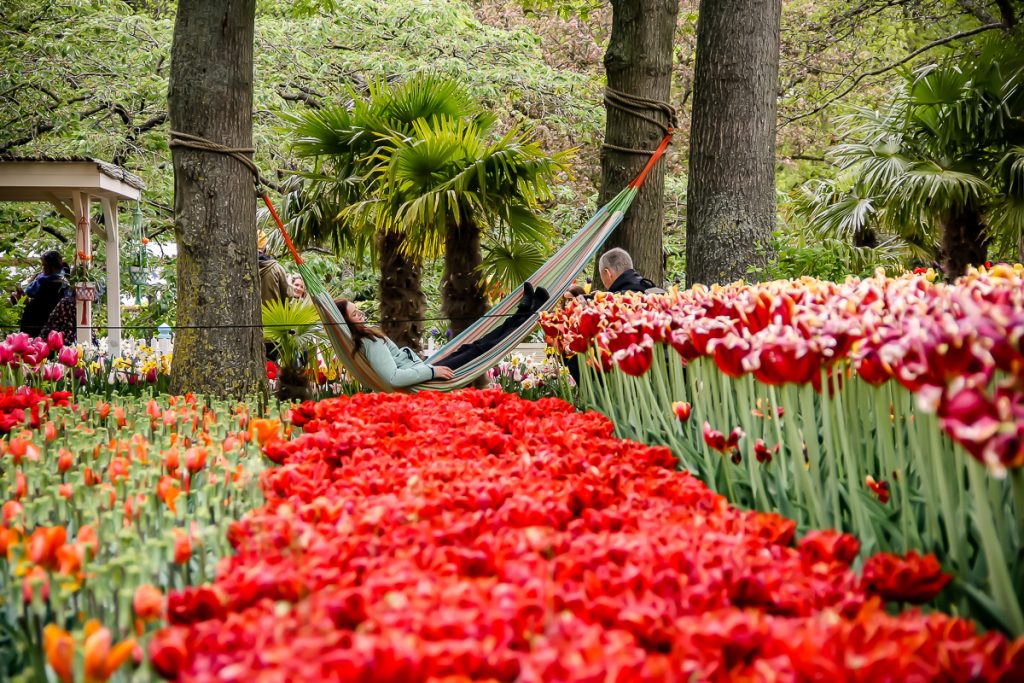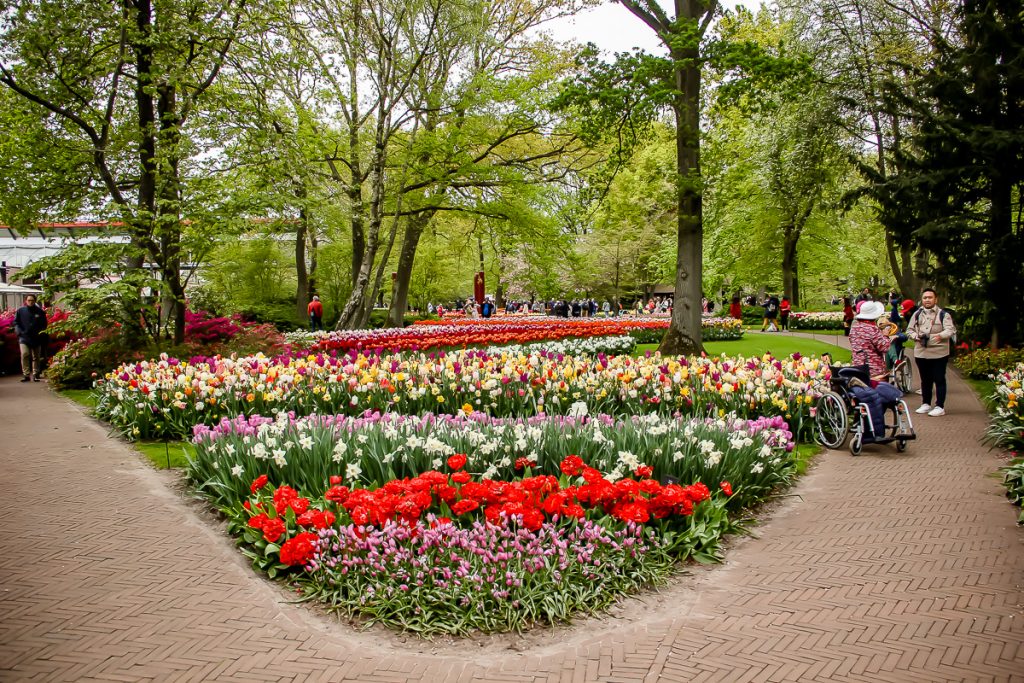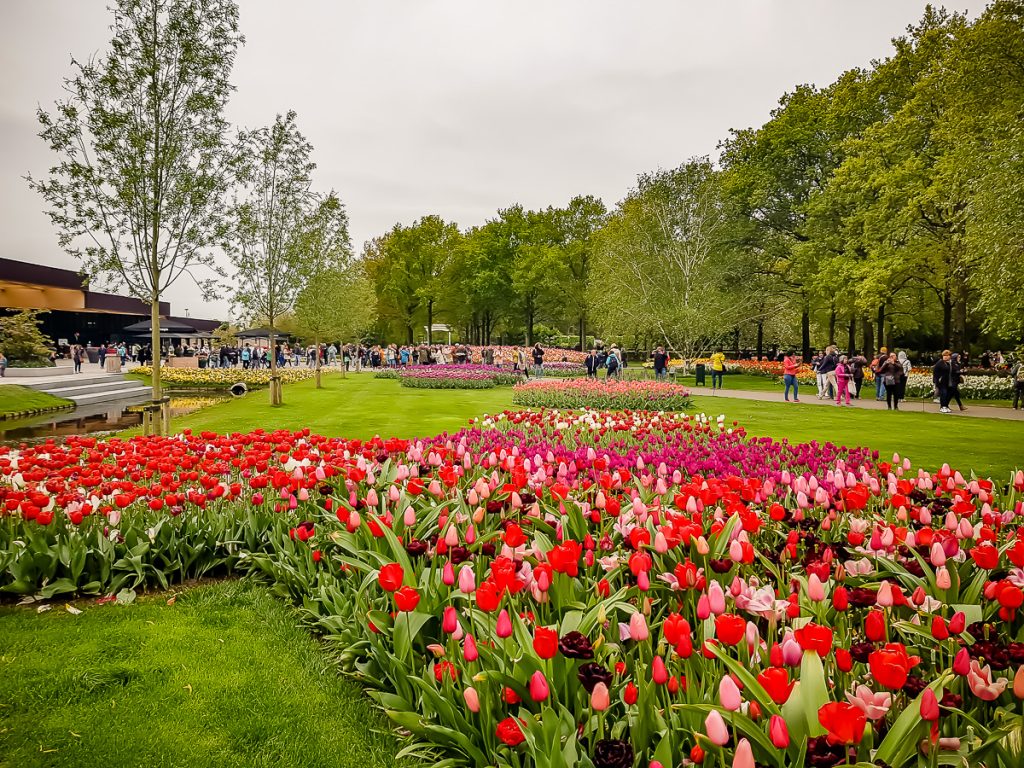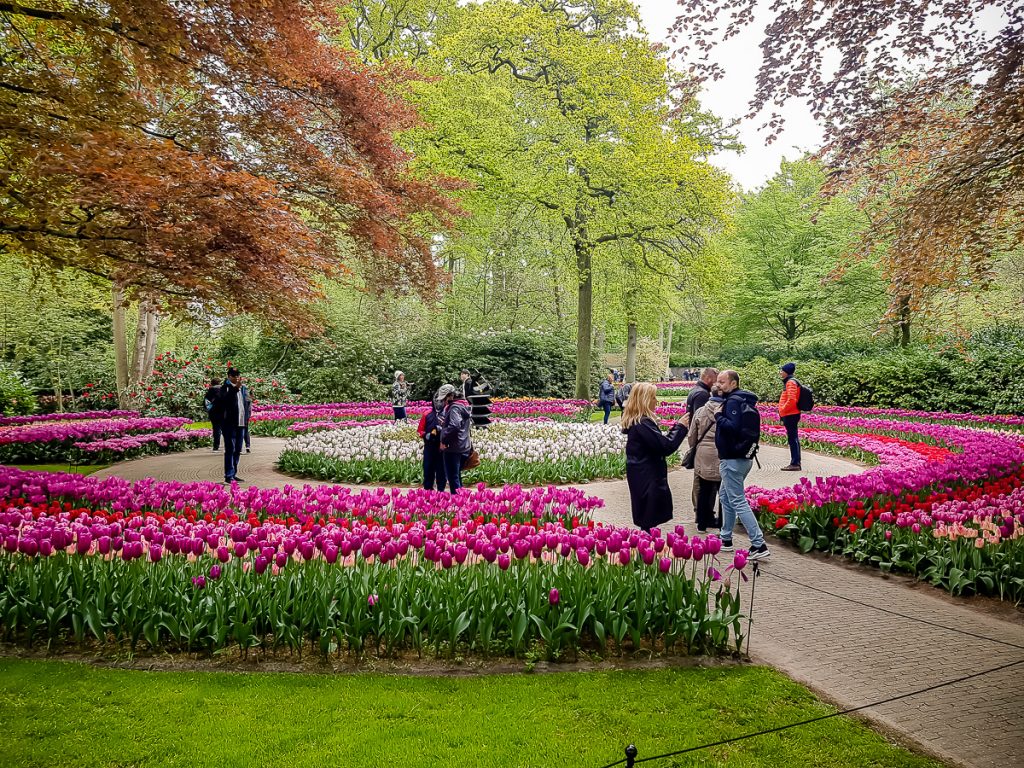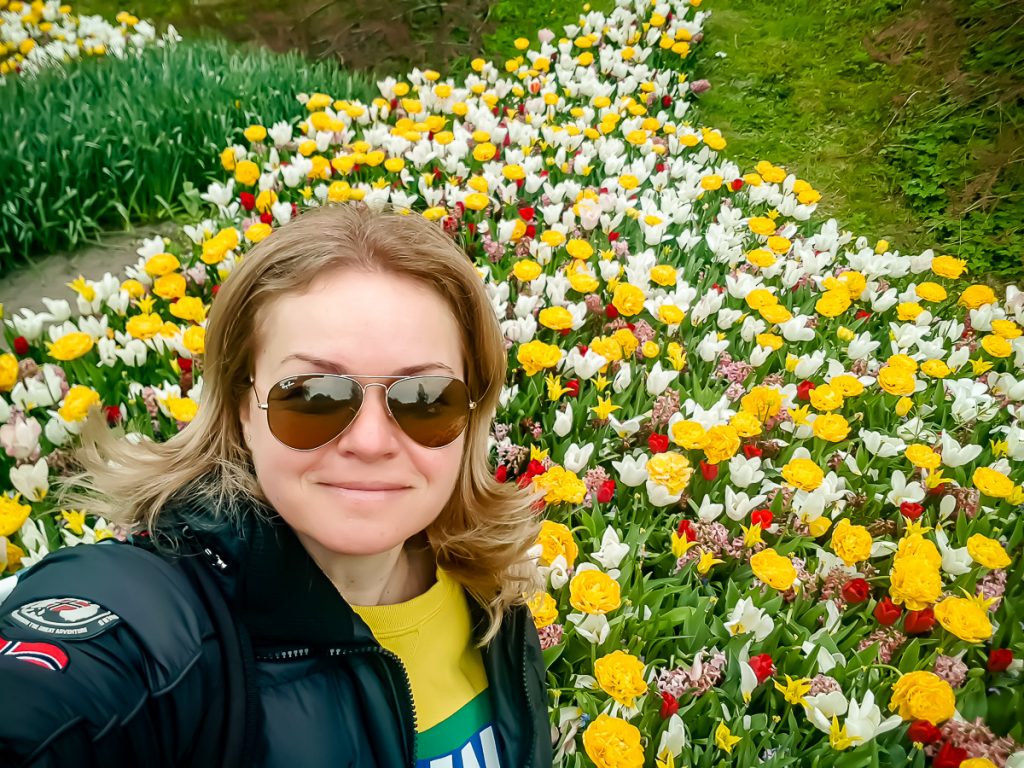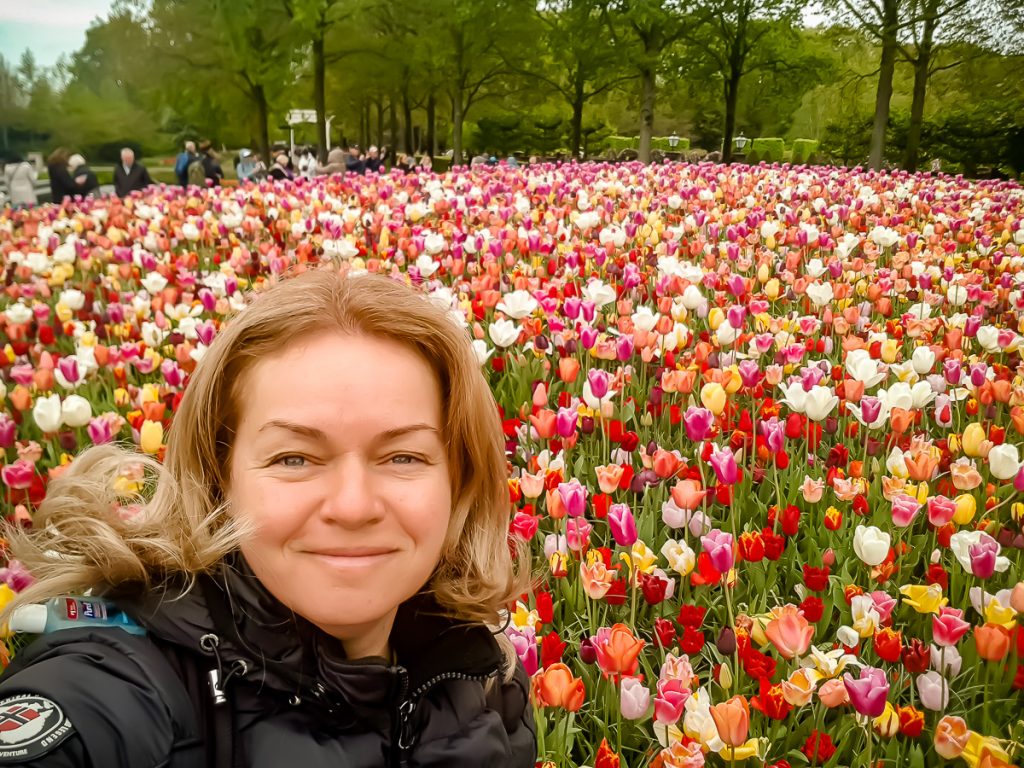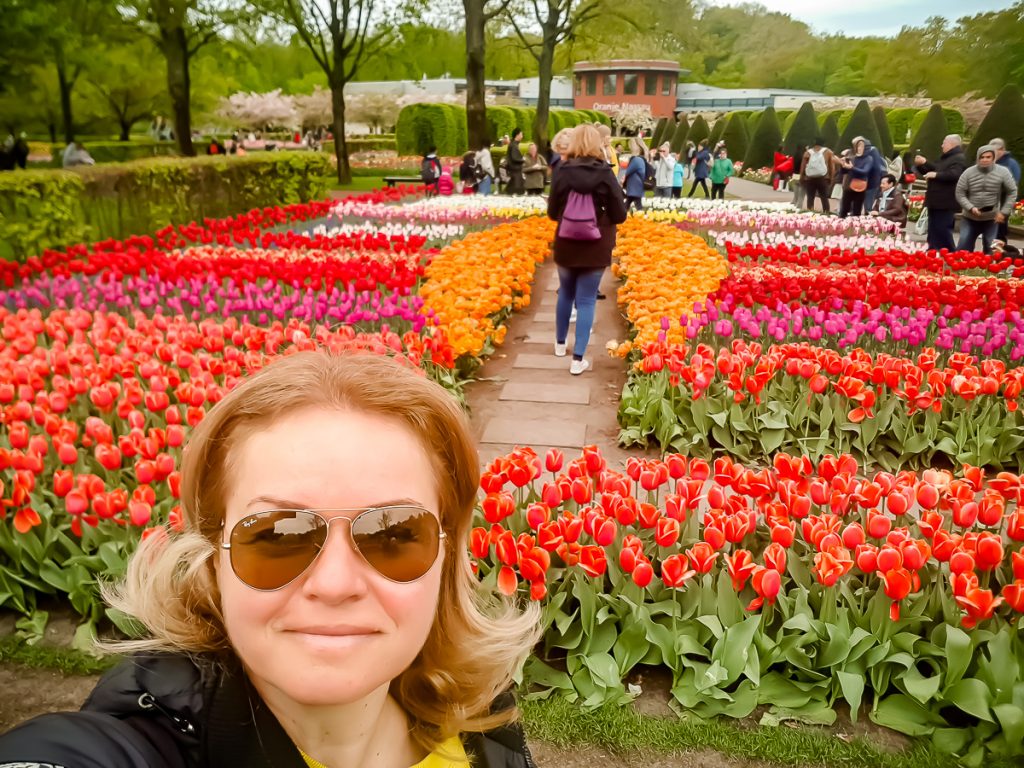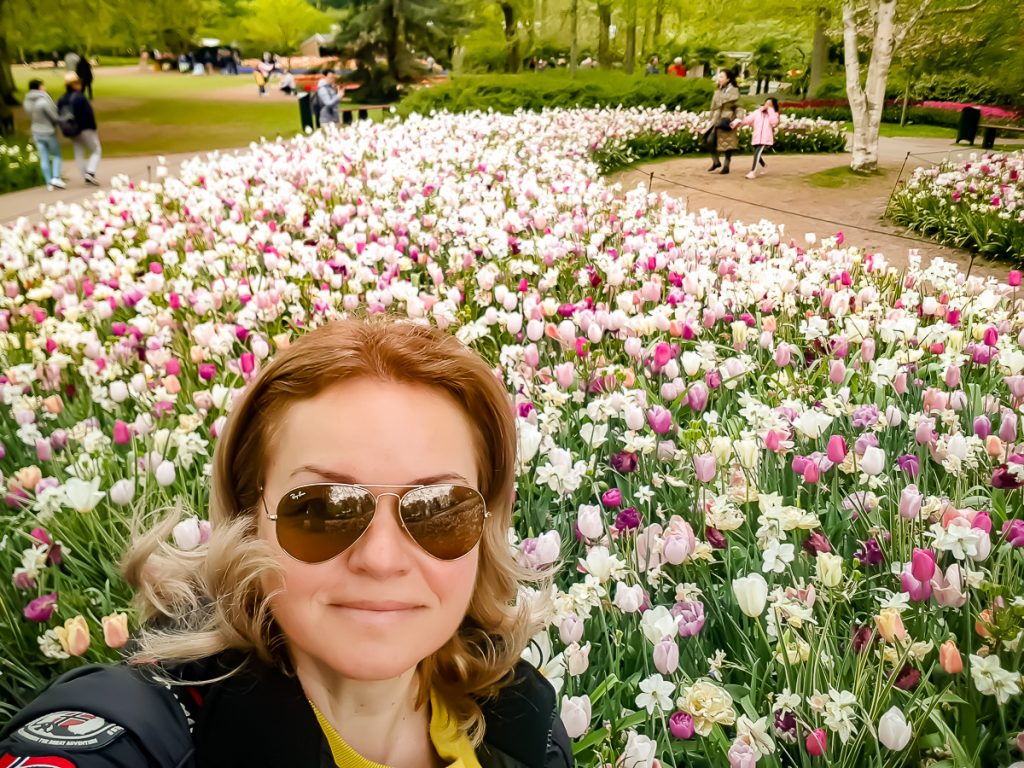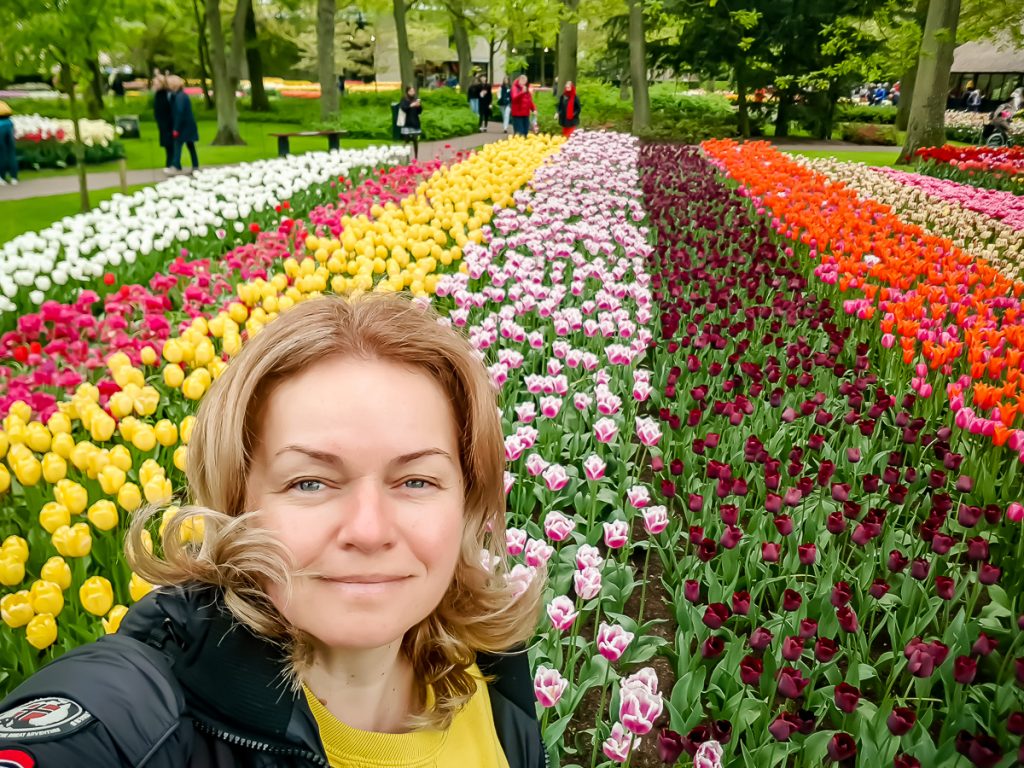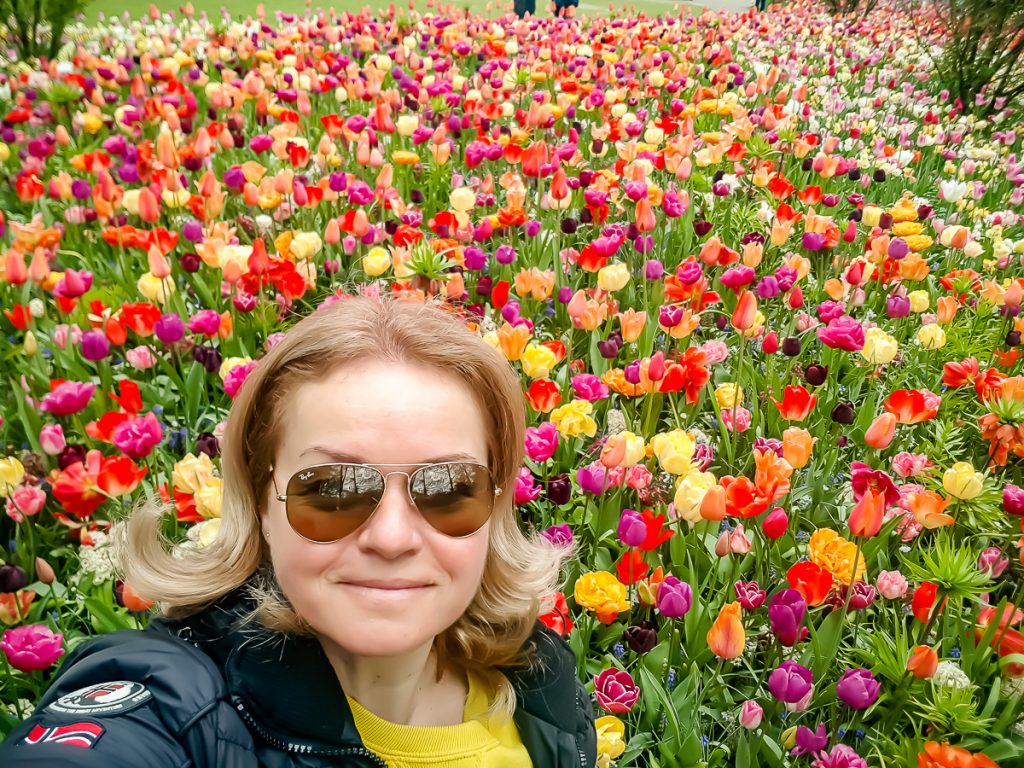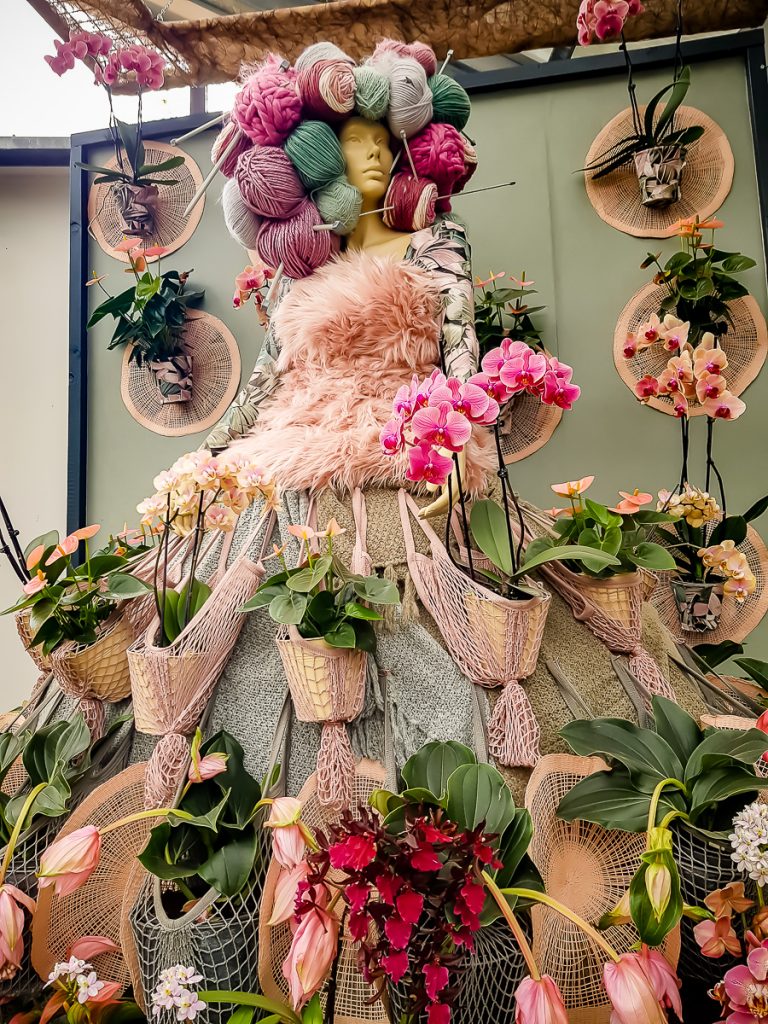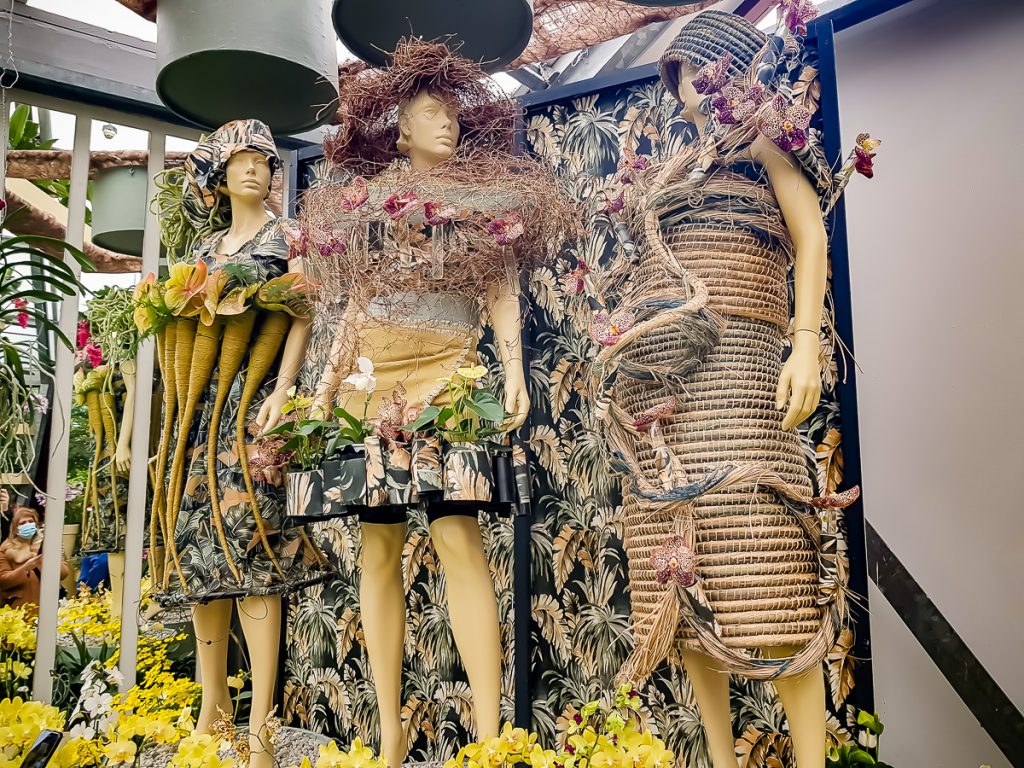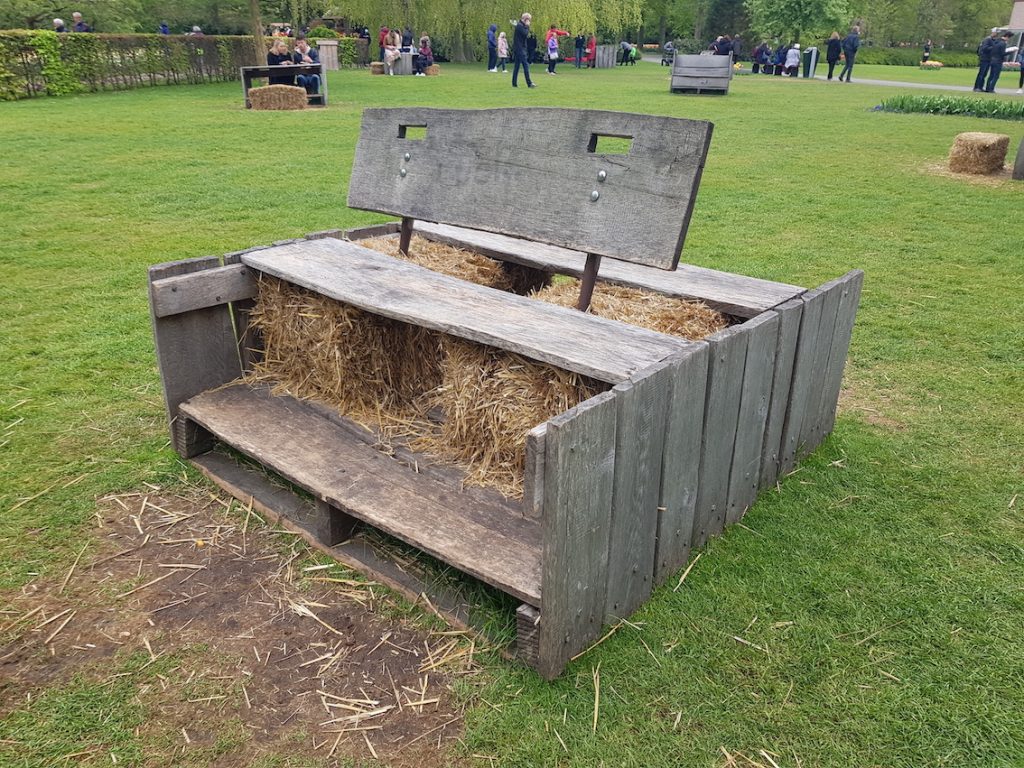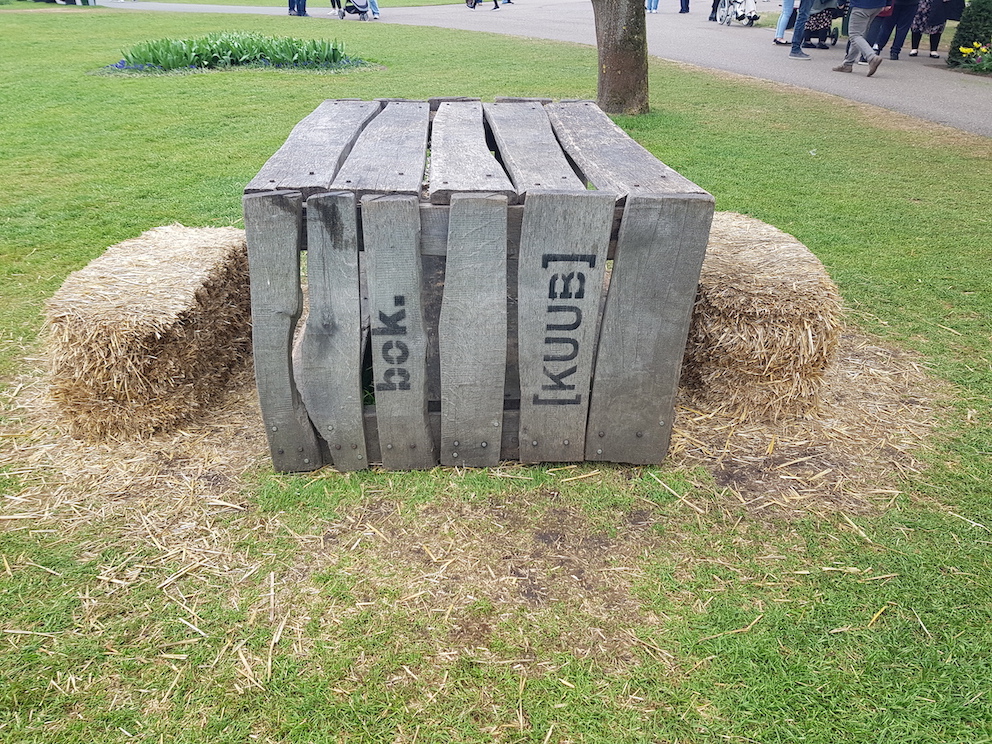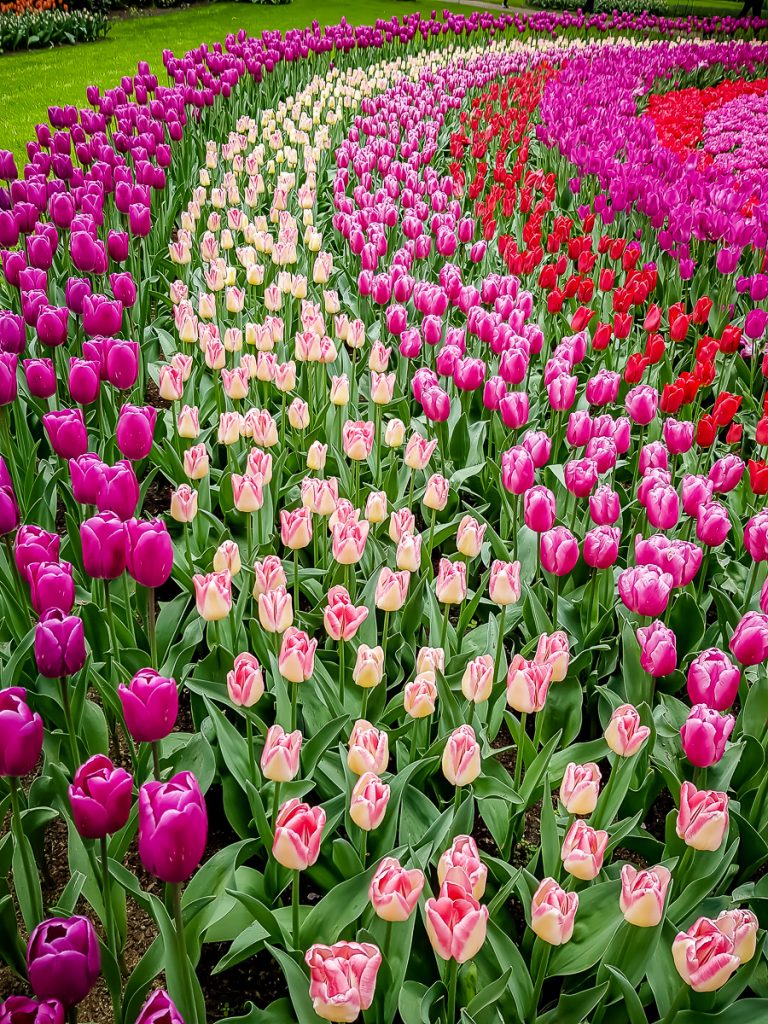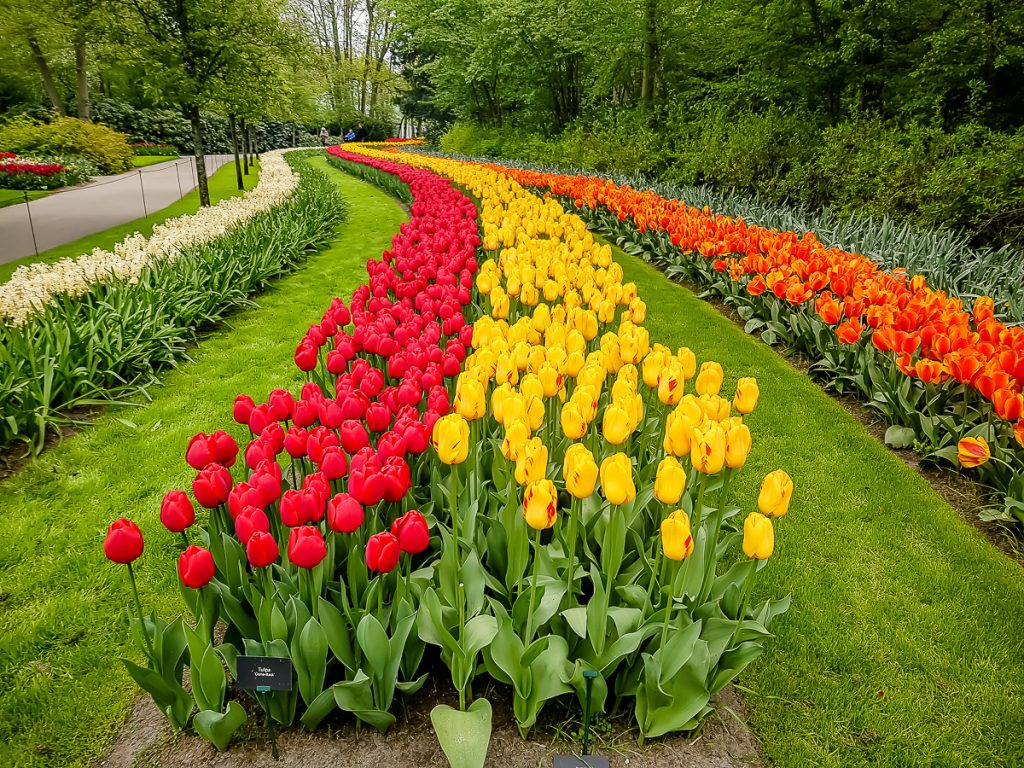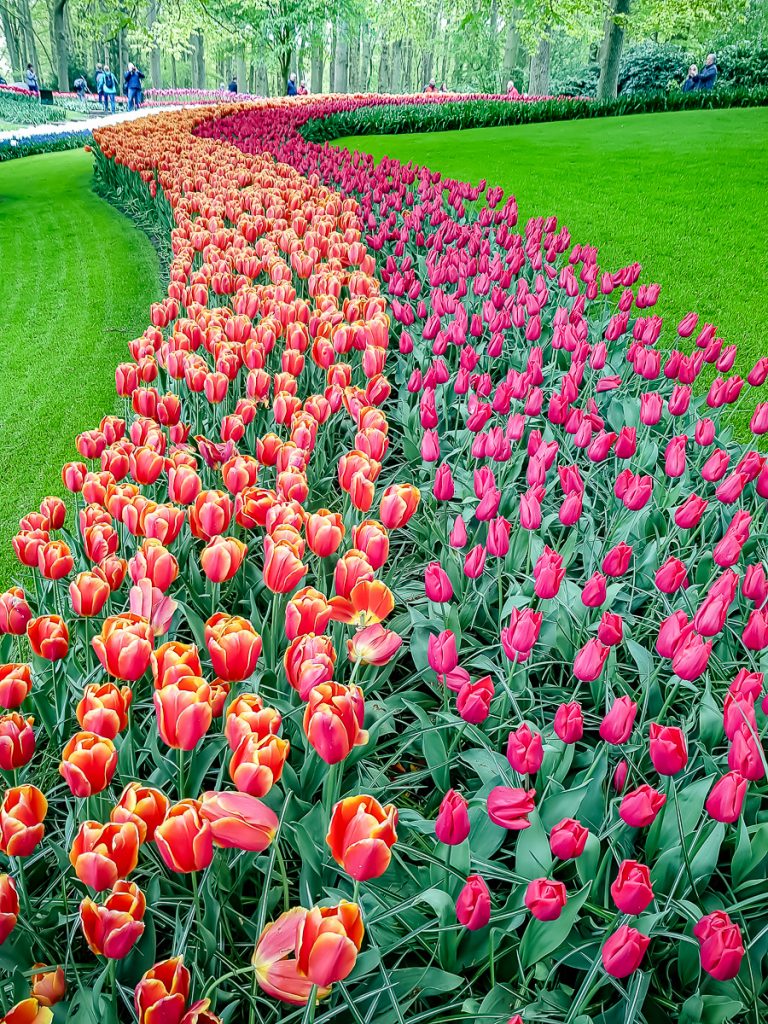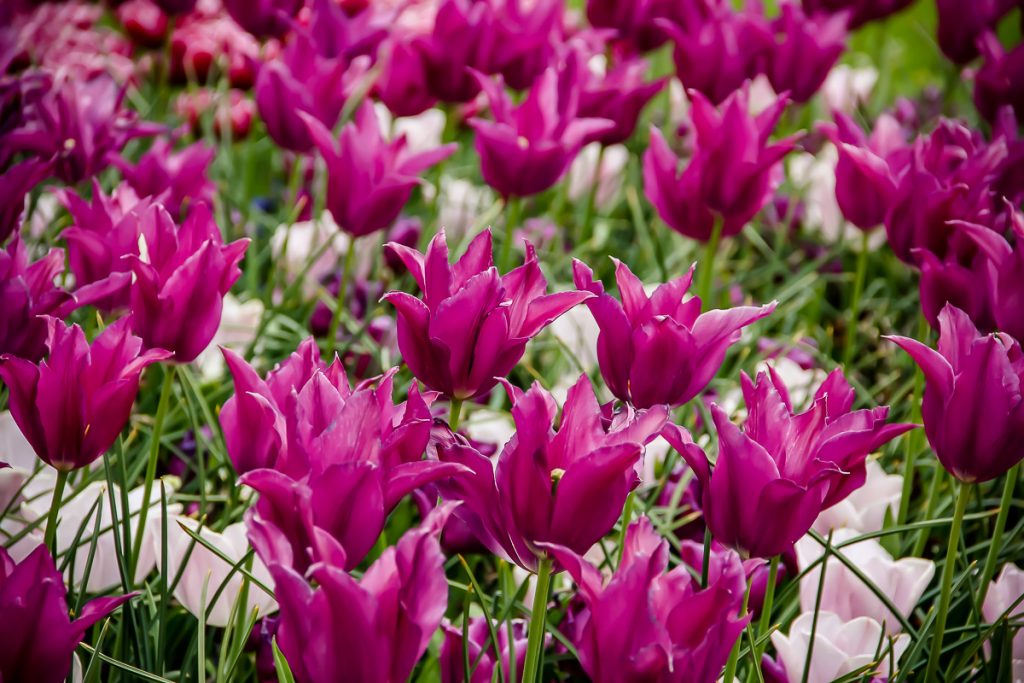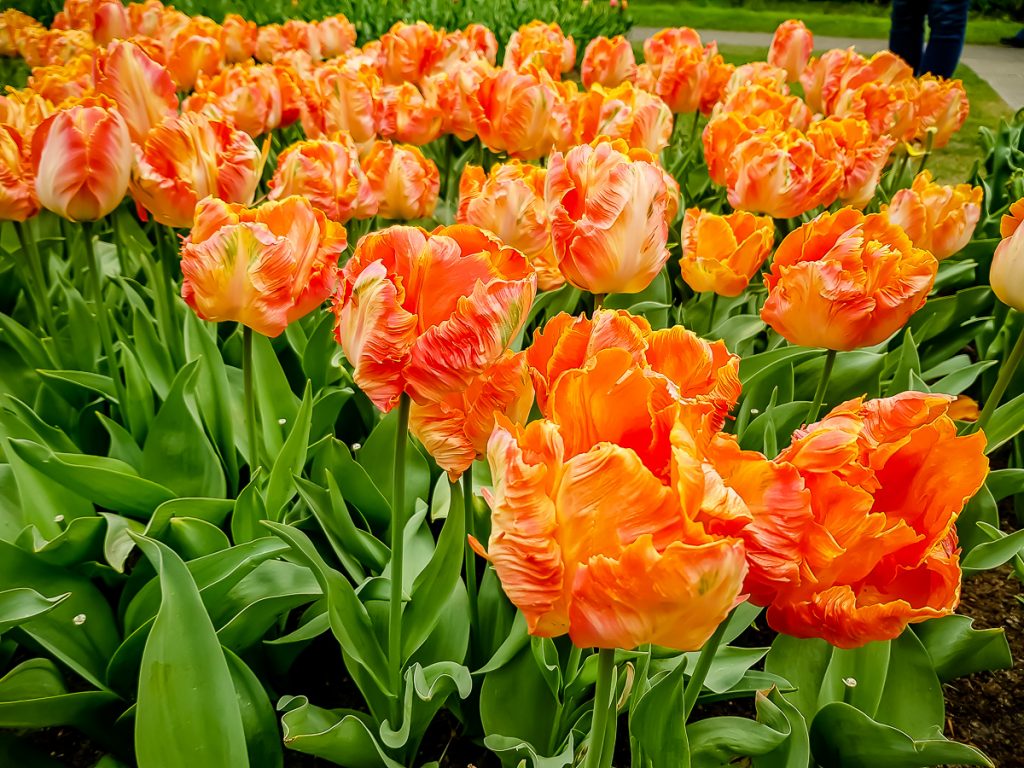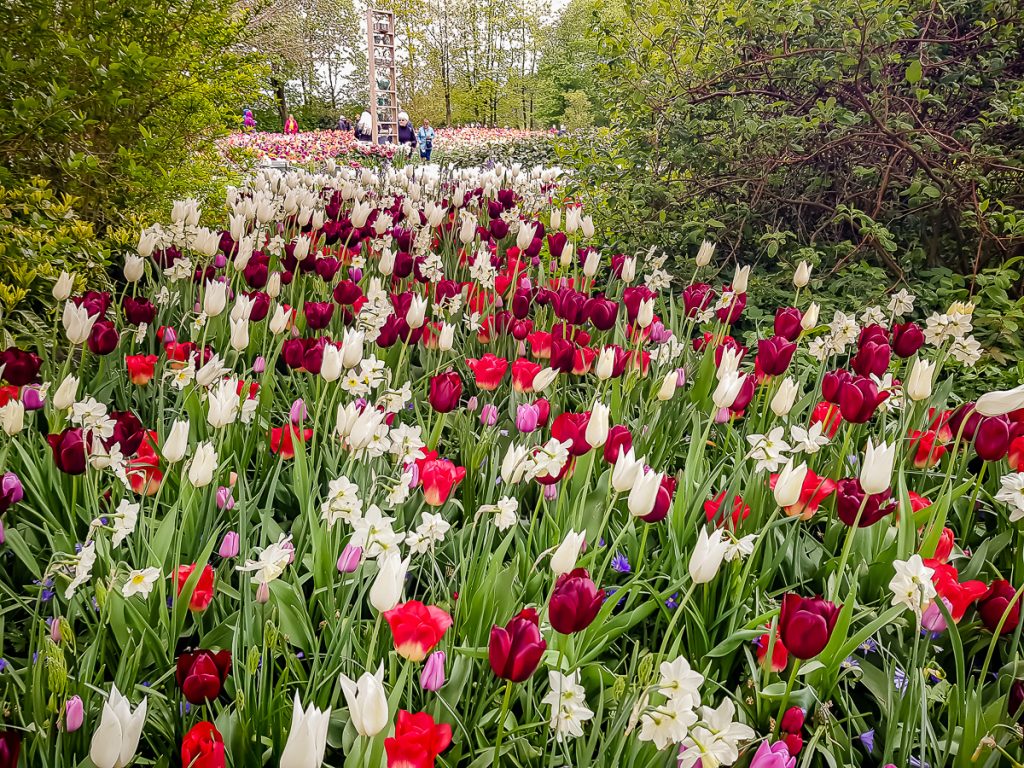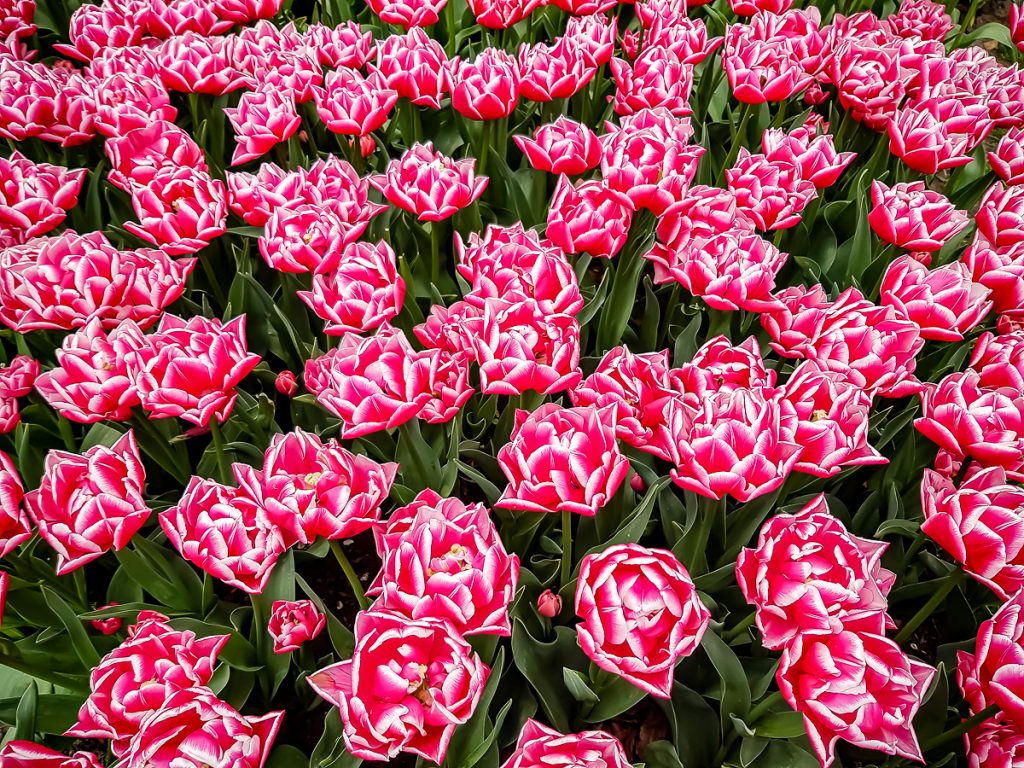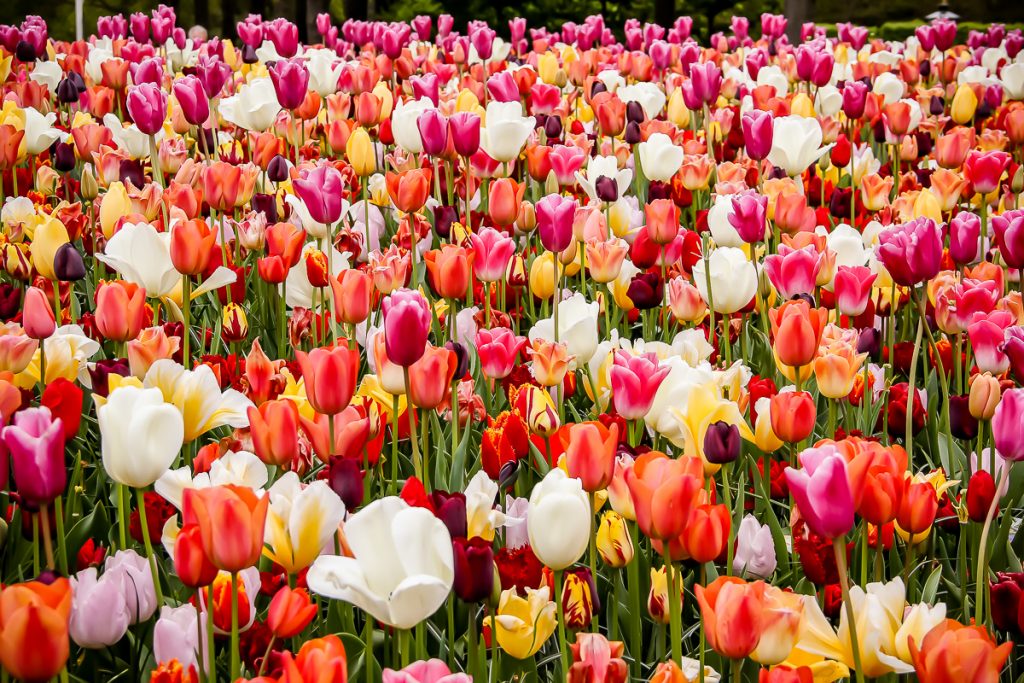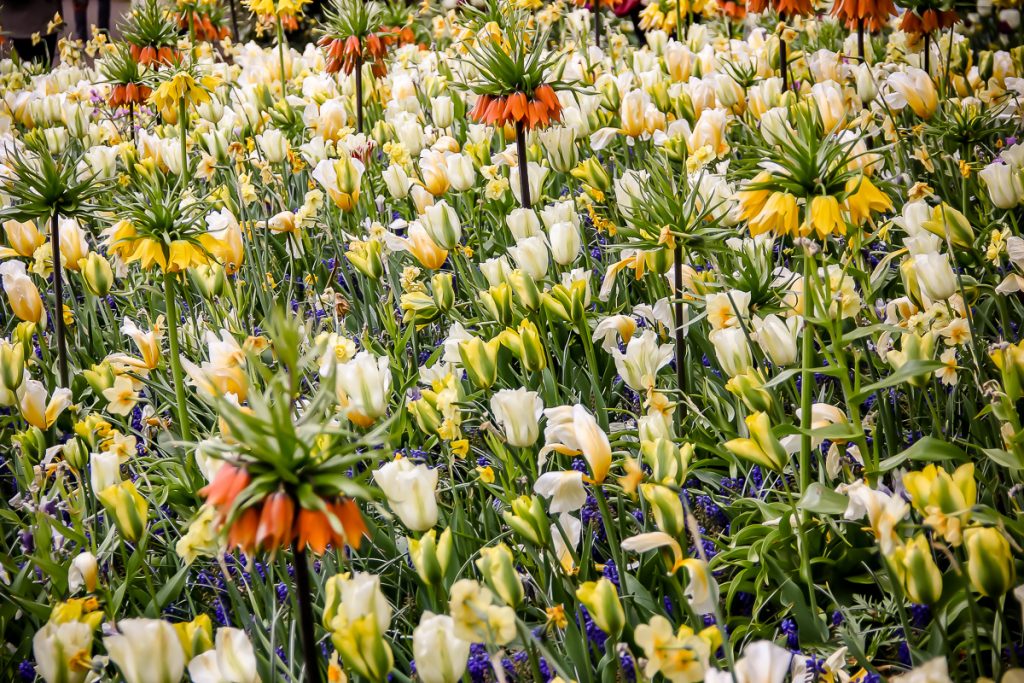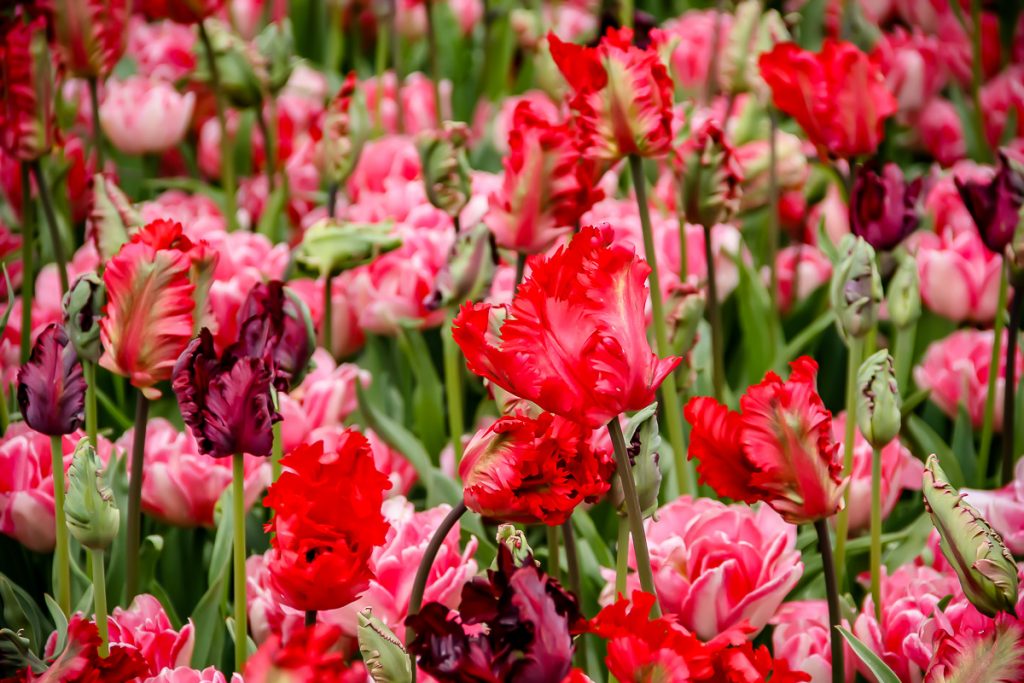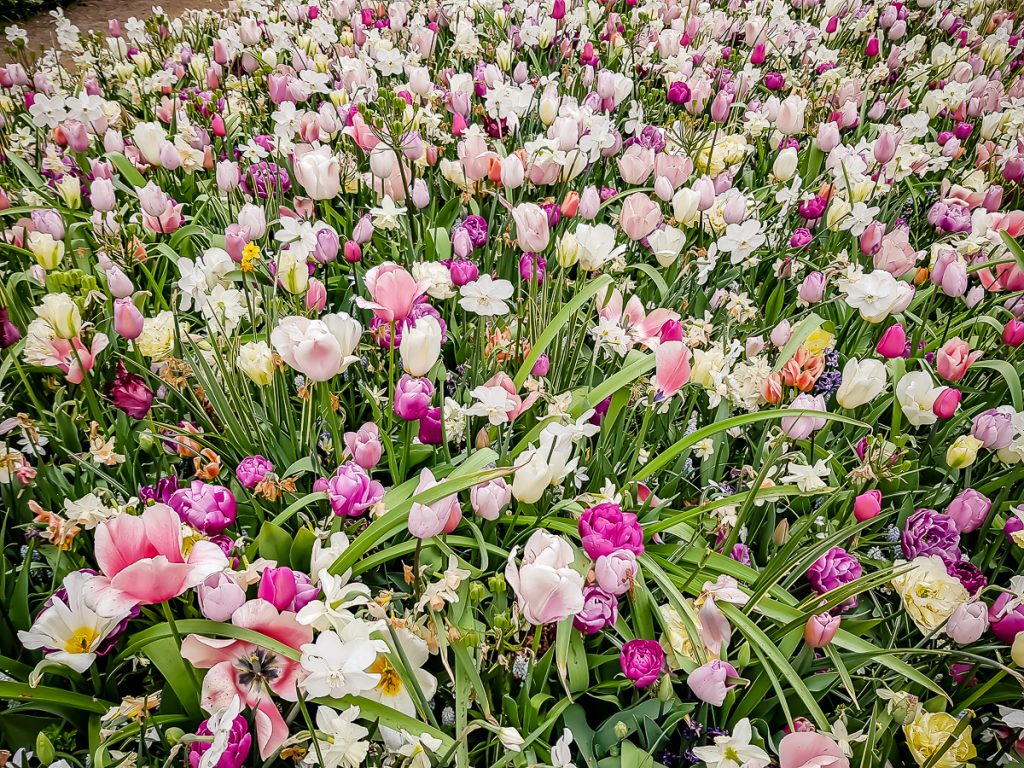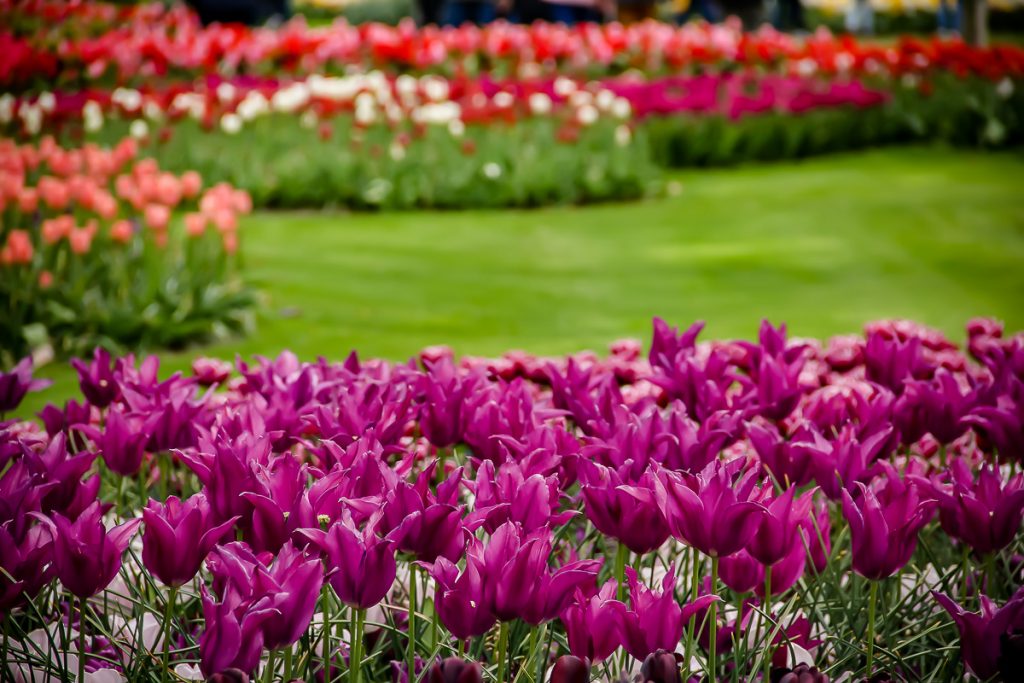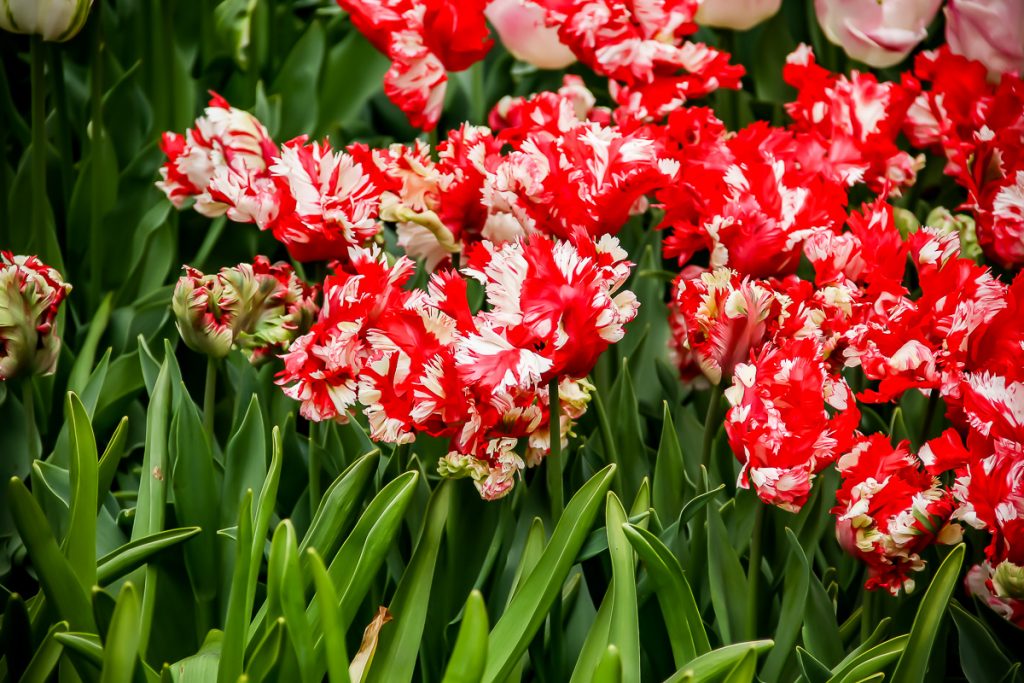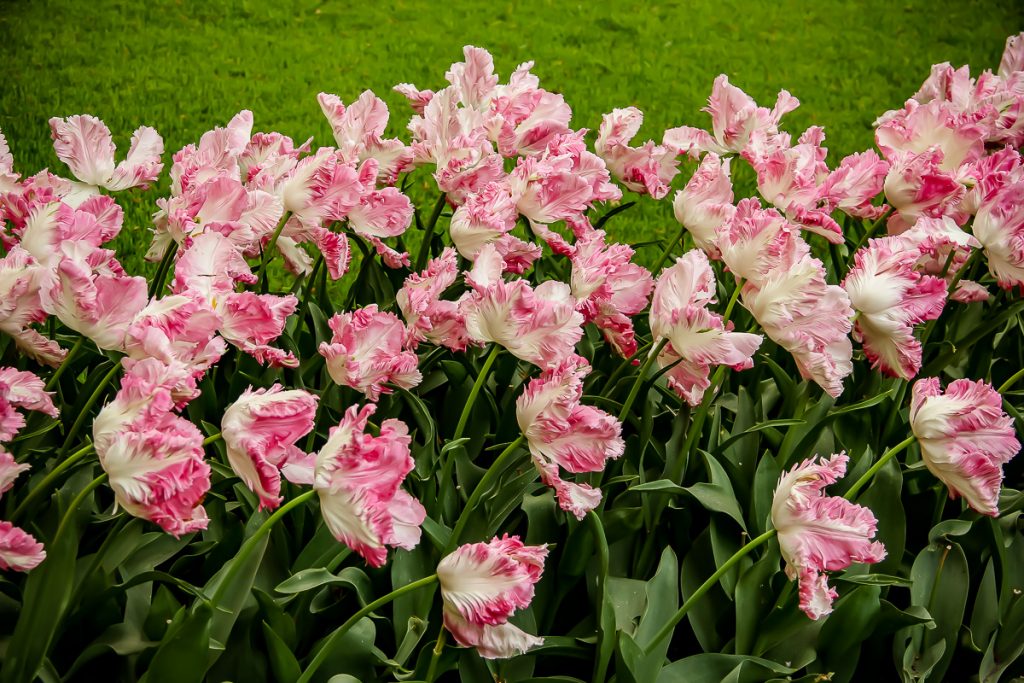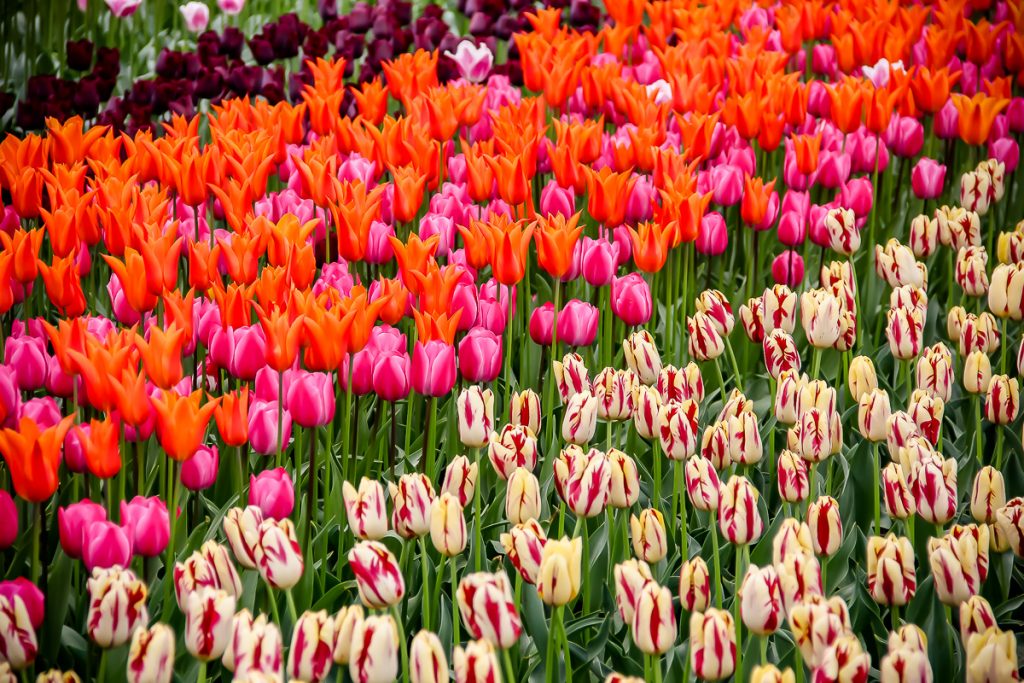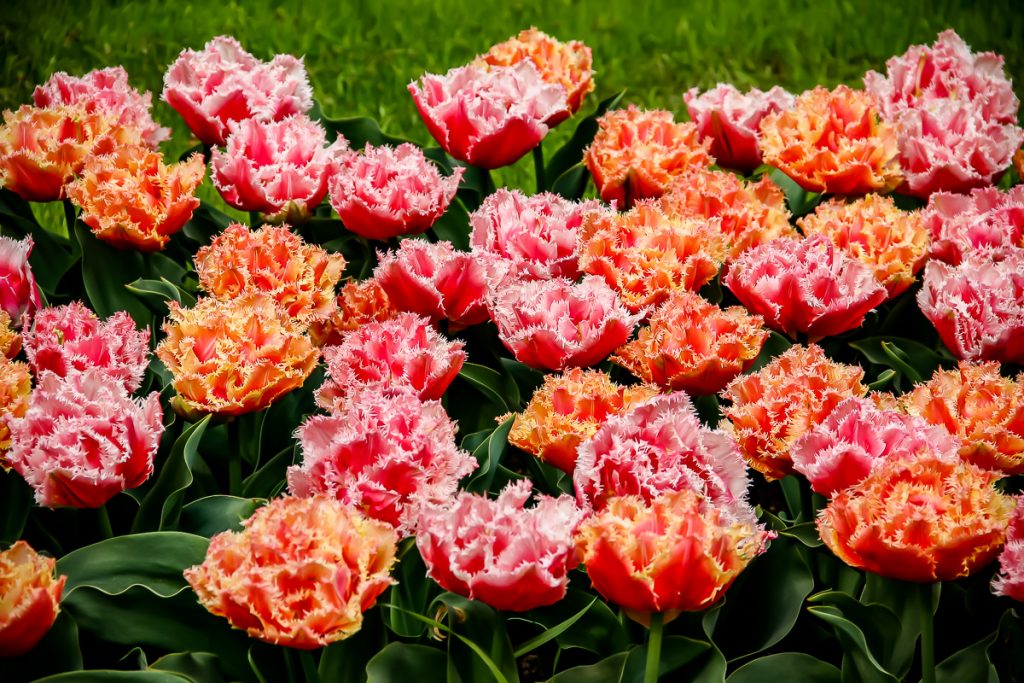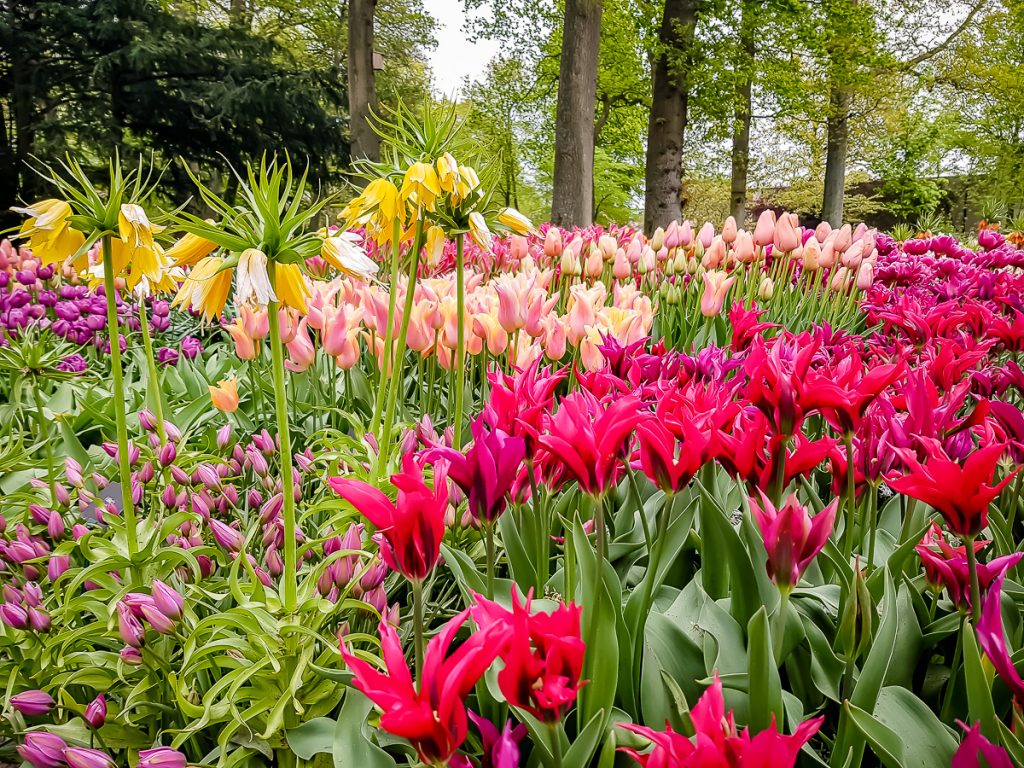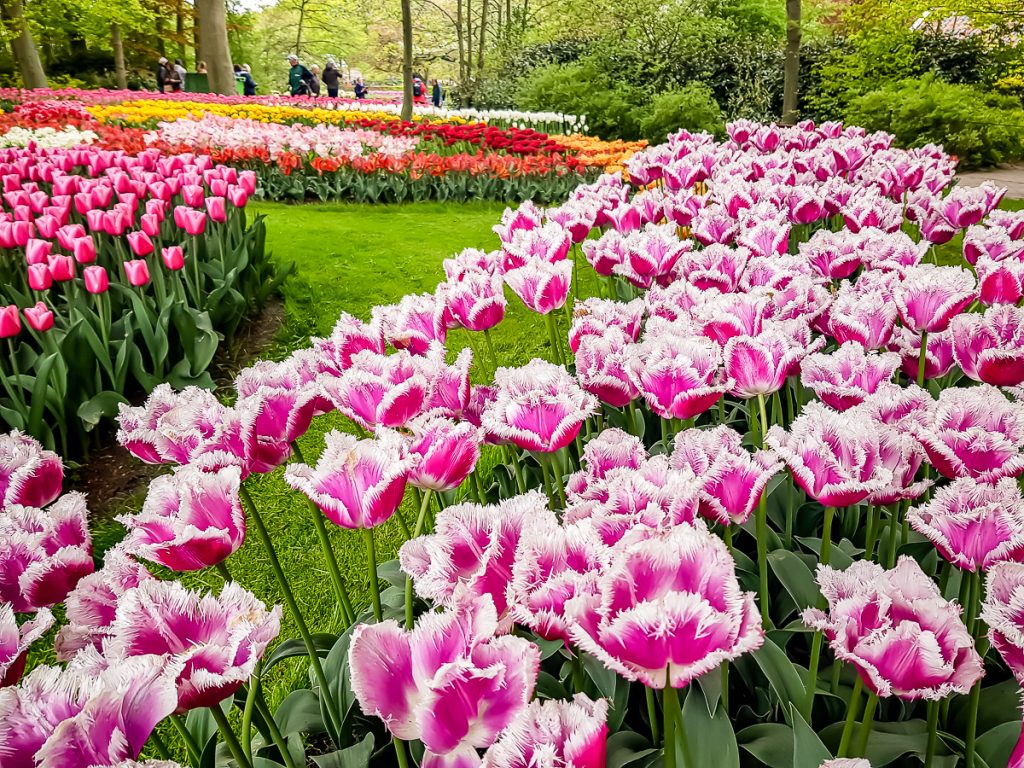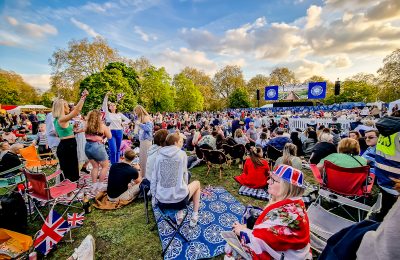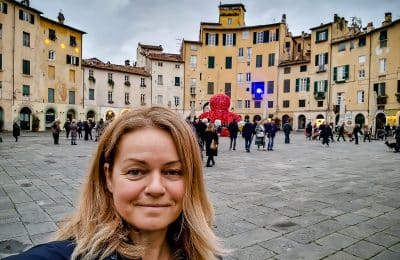I would have lost the grand prize if I had taken part in a TV contest. To the question “What is the origin of the tulip?” I would have answered without any hesitation: Dutch!
Like hell… I found out quite late that this tulip, which became a national brand in the Netherlands, which also gave it the fame of being the Tulip Country, comes from… Turkey!
Originating in Persia – the wild tulip grew here about 1,000 years ago – it was first cultivated and grafted by the Turks.
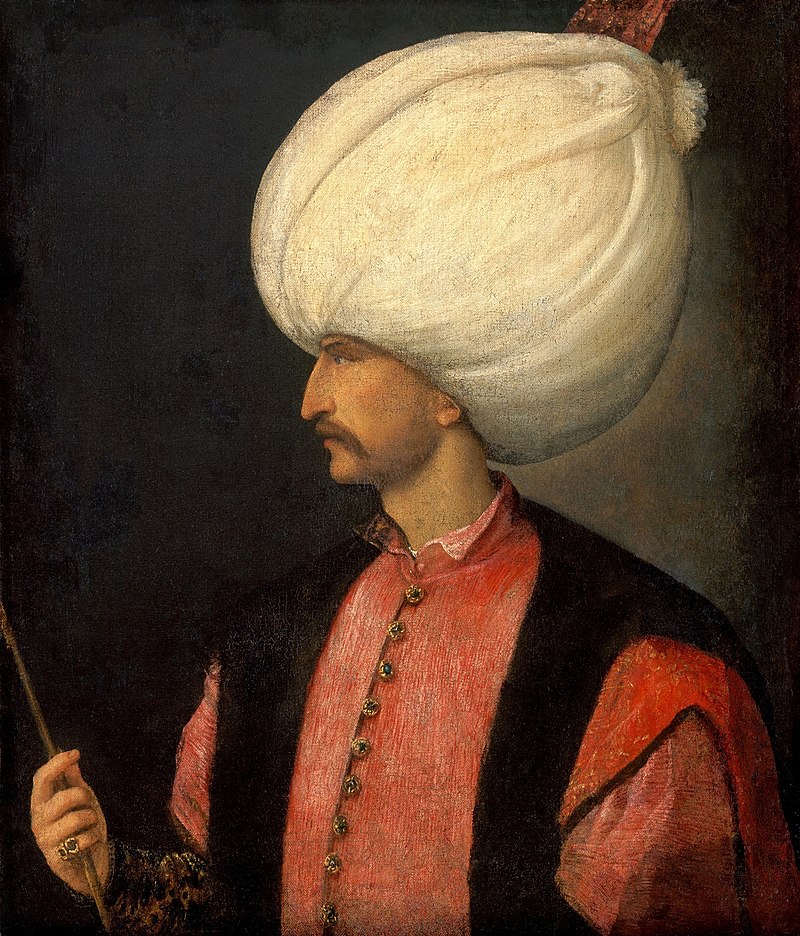
In fact, the name “tulip” comes from the Persian “tulipan”, which means “turban”. It refers to the shape of the tulip bulb that looks like it.
TULIP HISTORY
A VERY SHORT ONE…
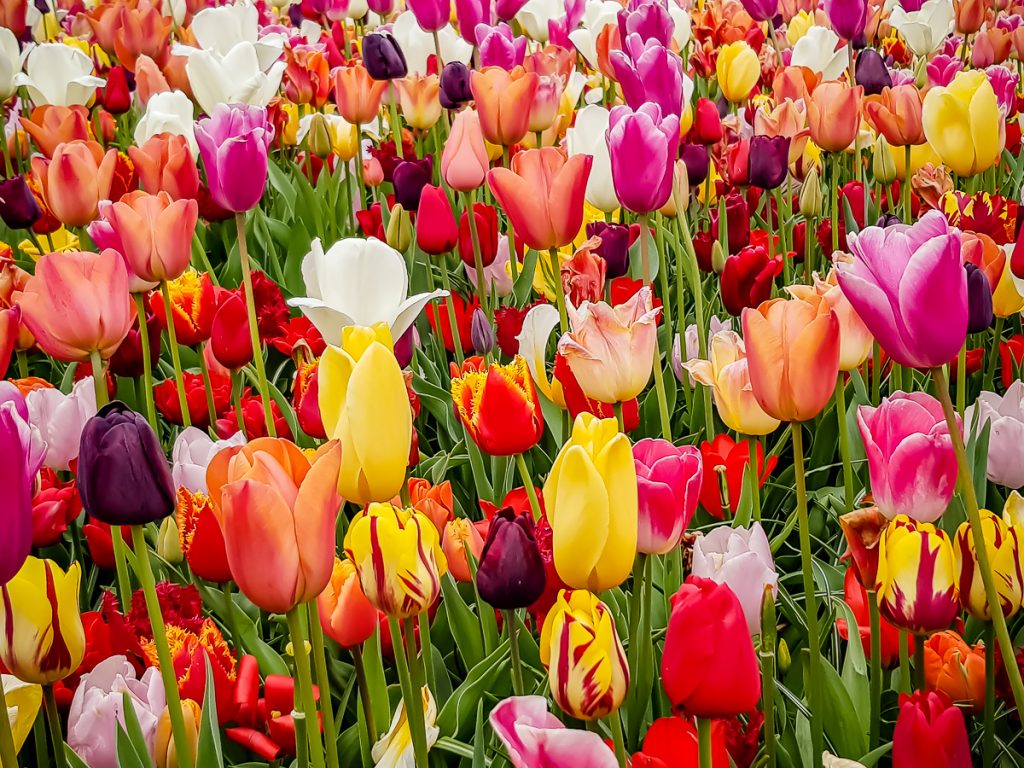
Around 1550, Turkey was a great power, led by the wealthy Sultan Suleyman. Yes, yes, the one from the soap opera Suleyman the Magnificent :).
The gardens of his palace were full of the most beautiful tulips.
The Sultan gave a few tulip bulbs to the Austrian ambassador to his court, who, in turn, gave them to the Dutch botanist and horticulturist Carolus Clusius.
He said “well, man, thanks!” and took the bulbs to Holland and planted them there in 1593. And that’s how it all started…
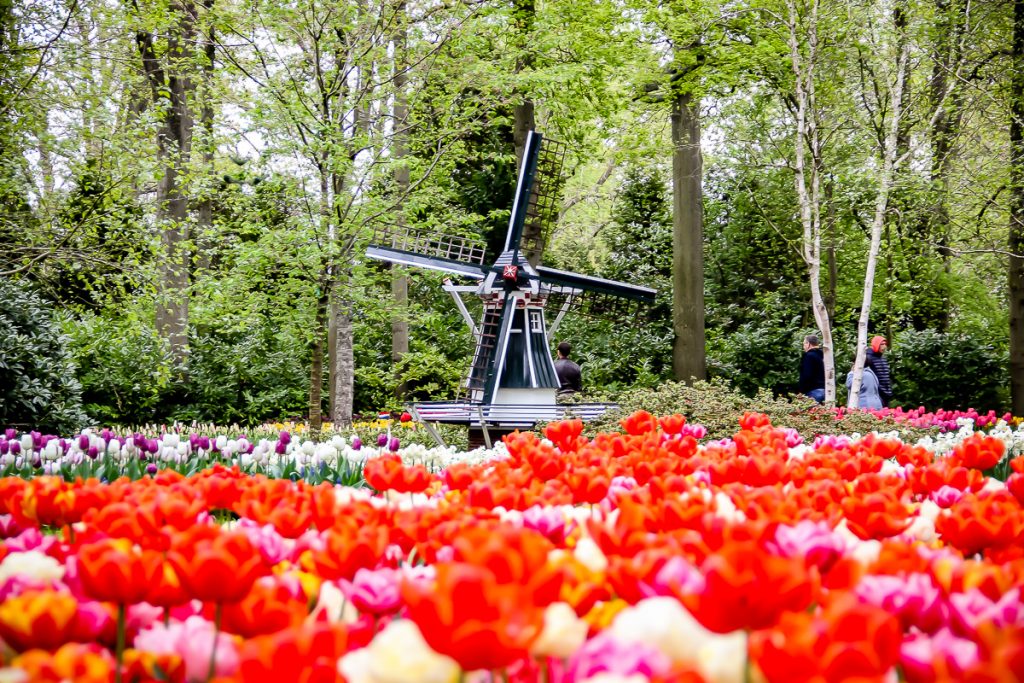
The tulip became extremely popular in the Netherlands during the 17th century. In fact, it was one of the most valuable commodities in the country! The “Tulip mania” had appeared.
The tulip was a real currency, its value being quoted as the shares. It is assumed that the term “bourse” (“stock exchange”) dates back to those times, as those who speculated on the tulip market often gathered in the house of the noble van Bourse family.
The hysteria had reached such a point that in 1636, at the height of the fever for tulip bulbs, some rare bulbs traded on the Amsterdam Stock Exchange were sold for the price of a luxurious house on the Grand Canal! Or another rare bulb has been paid for with a land of almost 50,000 square meters!
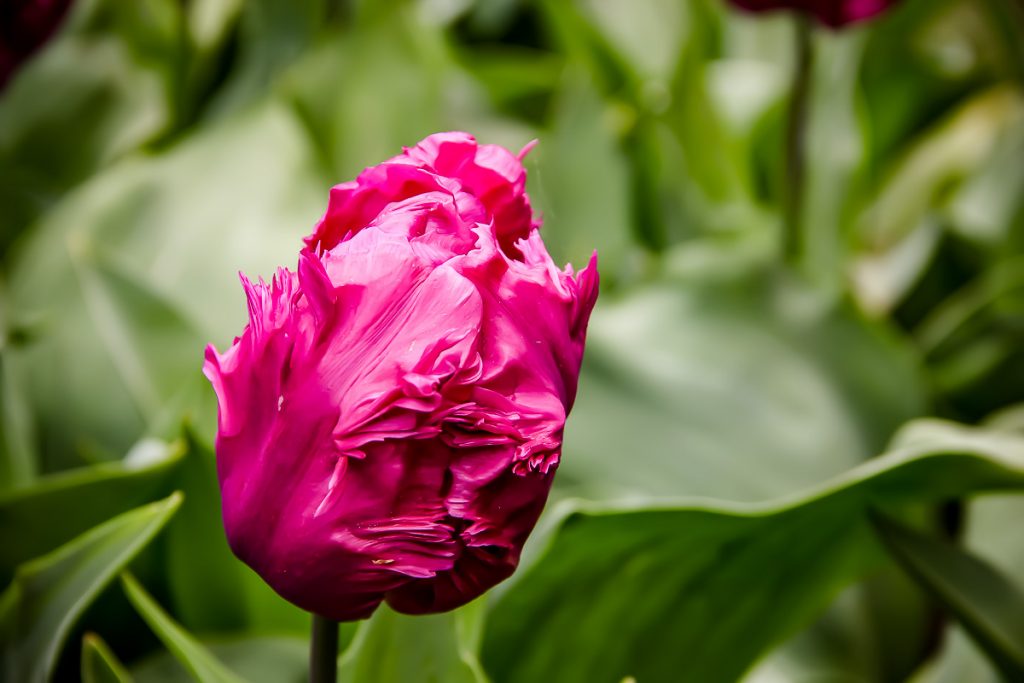
The tulip has remained the “star” of the country from then until today. The Netherlands currently produces about 90% of the global supply of tulips!
CAN TULIP BULBES BE EATEN???
Correct Answer: Yes!
I would never have imagined this.
And this did not happen like that, “for fun”, but out of a stringent need!
During World War II, more precisely during the last year, in ’44, ’45, the Dutch were under Nazi occupation.
The Nazis imposed strict food rationalization (it got the worst in February 1945, when a person’s daily ration contained only 340 calories!), had restrictions on agriculture, stopped supplies arriving at sea, to punish them for disobedience and a lot more…
As if those weren’t enough, the Dutch were in even bigger trouble: they had a very, very hard winter, which froze the canals and made it impossible to transport any goods.
More than 20,000 people died in that winter of famine, as history called the period, and their deaths were largely due to malnutrition.
But here is where the rescue came from…
Due to the war situation, tulip growers did not plant the bulbs that year. Thus, farms across the country had large quantities stored. Authorities have decided to use these stocks as food for the hungry population.
They had discovered that tulip bulbs had a lot of calories – more than a potato! So the old, dried bulbs began to be sold in grocery stores.
It was a challenge for the Dutch government to persuade the people to eat tulip bulbs!
Newspapers published recipes, flyers were distributed, cooking demonstrations were held, doctors had also begun to give advice to the population, explaining how to use and prepare the bulbs, to protect people from side effects. Mainly, tulip bulb flour was made for bread, and soup or stew was prepared.
No Dutchman would have ever thought that he would end up eating tulip bulb soup in order to survive, given the average degree of toxicity, but especially considering the long history of bulbs having a commercial value in the Netherlands…
What had seemed absurd before, had now become their chance to survive.
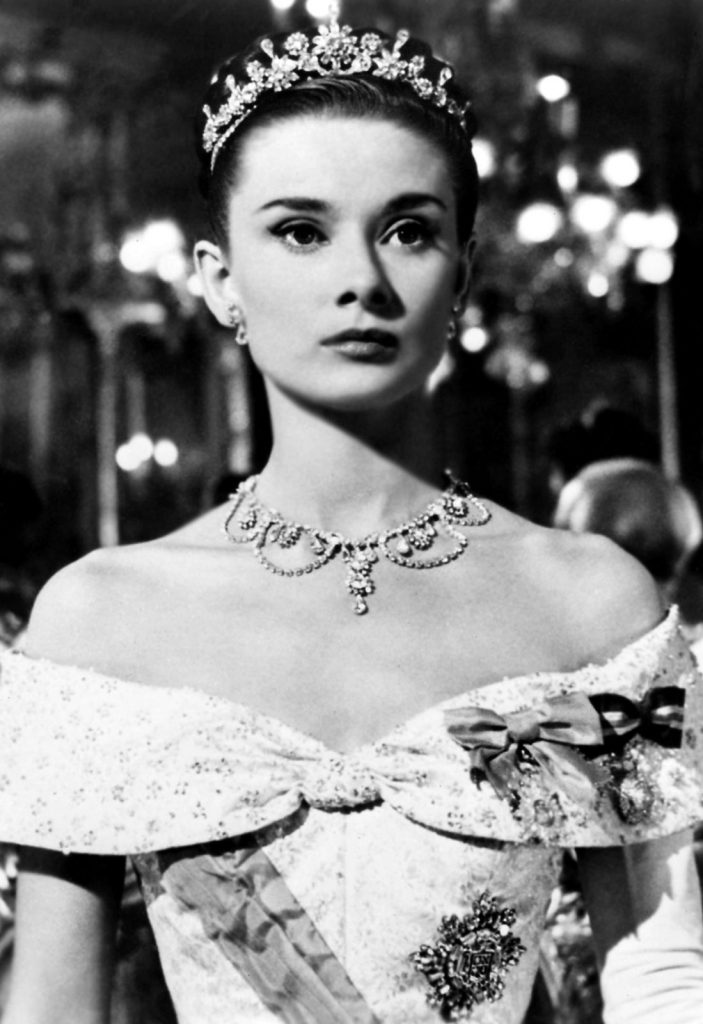
Even the famous actress Audrey Hepburn, originally from Belgium, having to move with her whole family to the Netherlands during World War II, said that she ate tulip bulbs in order to survive!
WHERE TO EAT TULIP BULBS
I was very curious to know if these bulbs are still being eaten anywhere today.
There are still families who have tulip recipes – from soups to cooked food. I don’t think they are preparing anymore, considering that it’s something that has marked their lives badly…
But I’m surprised to find out that there are several restaurants in the Netherlands that have tulip bulbs on the menu! (Here’s a good reason to come back hihi)
There are several Chefs in fine-dining restaurants who have recently discovered tulip bulbs as an ingredient.
Café Caron in Amsterdam and De Librije in Zwolle are two of the locations. And in the Michelin-starred restaurant, De Nieuwe Winkel, organic Yokohama bulbs (that give us the yellow tulips) are among the most expensive items on the menu!
The explanation would be that it takes a bulb some 5 to 7 seasons to become the right one. The chef of the restaurant even says that the bulbs are a luxury product, even more expensive than caviar, if you take into account the time and energy…
However, the tulip bulbs that people ate during World War II cannot be compared to those of today. Those were old and dry and tasted extremely bitter. A fresh tulip bulb has, as far as I understand, a sweet, milky taste, which is not bad at all. Well, it is for me, as they say it has the taste of onions … (By the way, the bulb is a close relative of onions and garlic.)
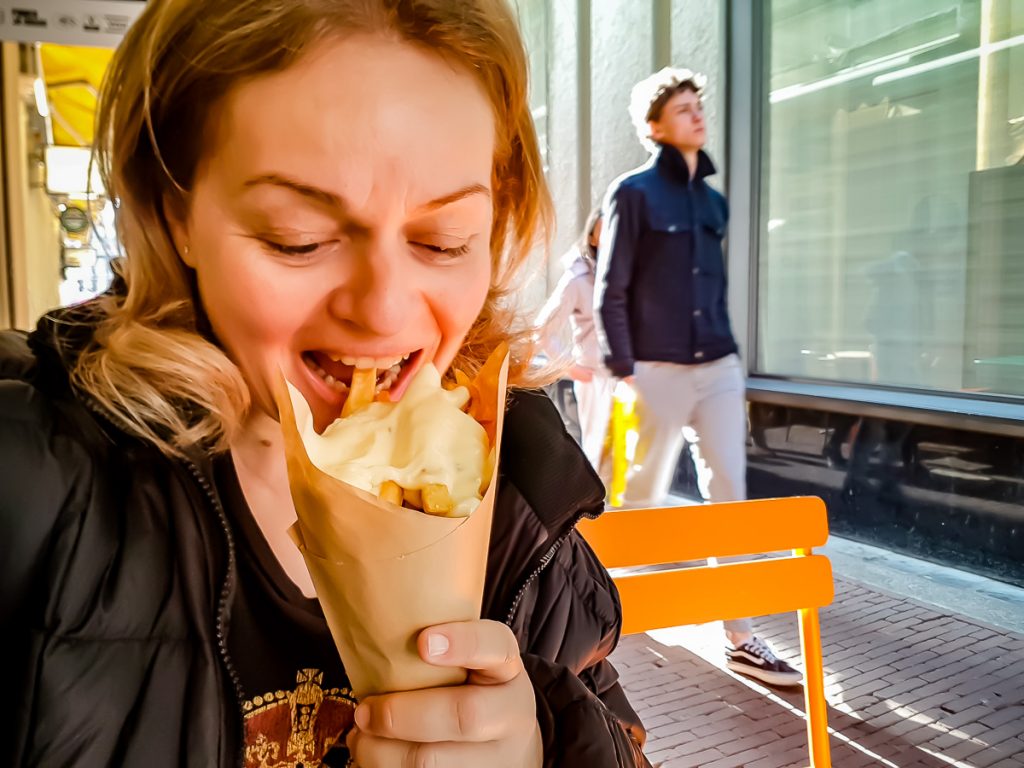
If the bulbs have more calories than a potato, I’d rather stick to the potatoes :). To those fried, with mayonnaise, that you keep eating until you become double in size!
Did you ever think to prepare a bulb stew? You need to make sure that they are good to eat, that they were grown organically. Because most bulbs are treated with pesticides and it would not be advisable to boil them, because after that you will call 911.
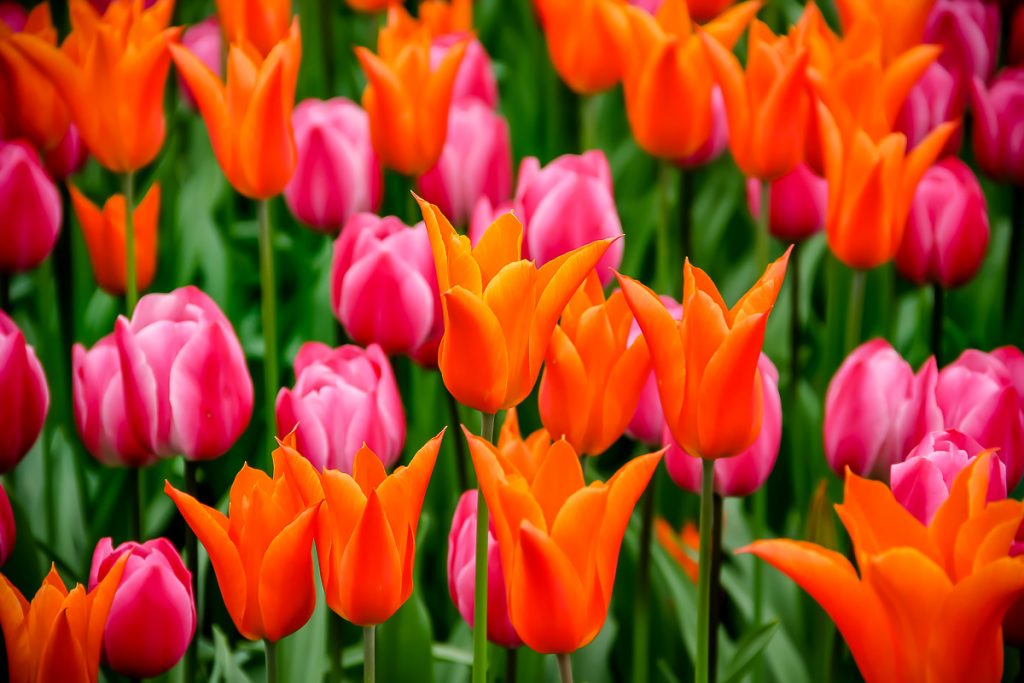
The petals, however, are even more edible, so to speak. They can be eaten raw or cooked, but lose a lot of color when cooked.
Depending on the variety, the taste of the petals varies from one similar to that of green beans, to that of cucumbers, or to the taste of salad.
TULIP SEASON IN THE NETHERLANDS
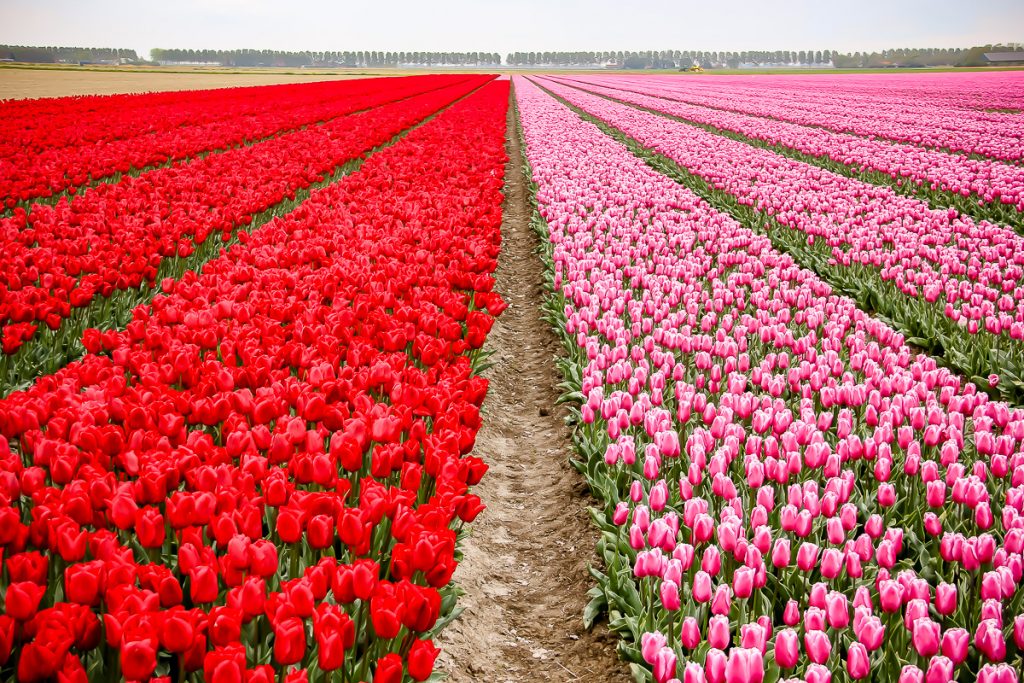
I have never got to see the tulip fields in flower on my 7 visits to Amsterdam. I was in the summer, in the winter, or in late spring, too late for tulips. So this year I planned to come at the end of April, when I knew I could see tulips not only for sale in the Flower Market or elsewhere, but also in the field.
Moreover, I found out that there is a famous tulip park, where you are left speechless in front of dozens of varieties.
KEUKENHOF
I got online and bought a trip to the Keukenhof – the famous park.

I paid 39 euros which included the trip there and back (departure and return point – Amsterdam Central Station), the entrance ticket and an audio guide.
Given that the entrance ticket to the park costs 19 euros (9 euros for children) if you take it at the entrance, I’d say it was worth it, considering that the travel from Amsterdam to the park is one of about 45 minutes.
The place can be reached very easily by car. You have a parking lot right in front, which costs 6 euros, one price, no matter how many hours you leave your car there.
I photographed from the bus everything that was colored in the distance hihi. I was delighted to see the tulip fields and it didn’t matter how the pictures came out.
Arriving at the destination, we all got off and… went off!
We had 4 hours to see the park.
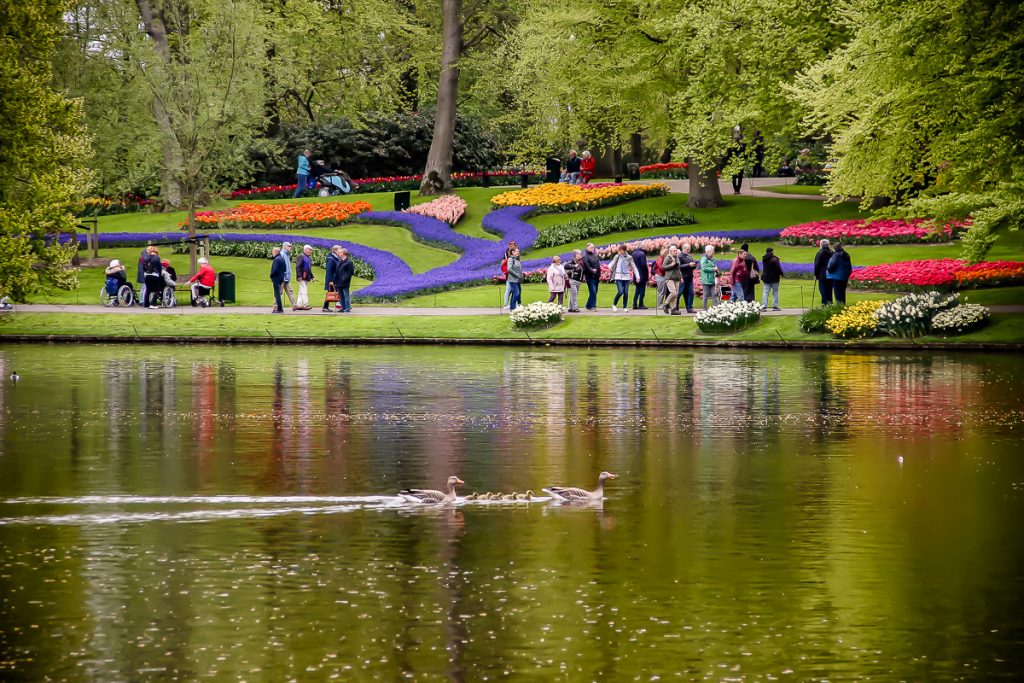
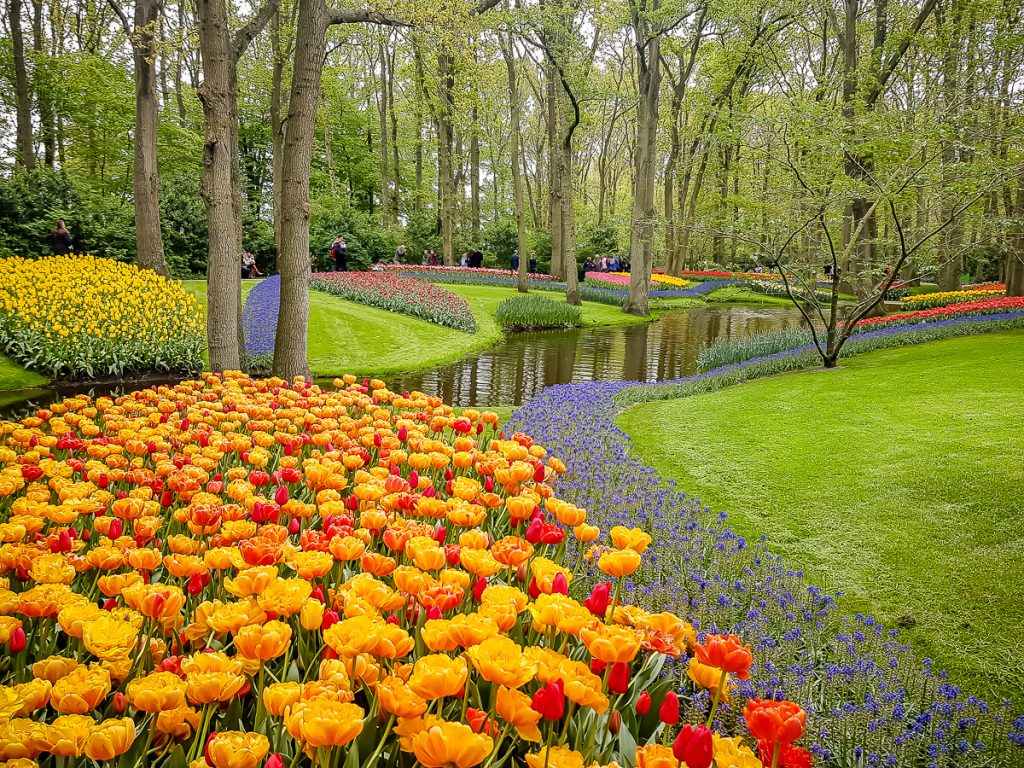
The Keukenhof was, in the 15th century, the garden for the kitchen of a castle. From here they took their vegetables… Over time, the property grew.
In the middle of the 19th century, two landscape architects – father and son (who also designed the Vondelpark public park in Amsterdam), redesigned the castle gardens in an English style. What they did then is still the basis of today’s Keukenhof park!
In the middle of the 20th century, at the initiative of some bulb producers and exporters, the park became a spring park and was open to the public, with great success, being now the largest flower garden in the world!
Being a spring flower park, it is only open for two months a year! I have no idea what happens to it for the rest of the year, but it is clearly open to the public when the public has something to see… That is, from mid-March to mid-May. That’s it.
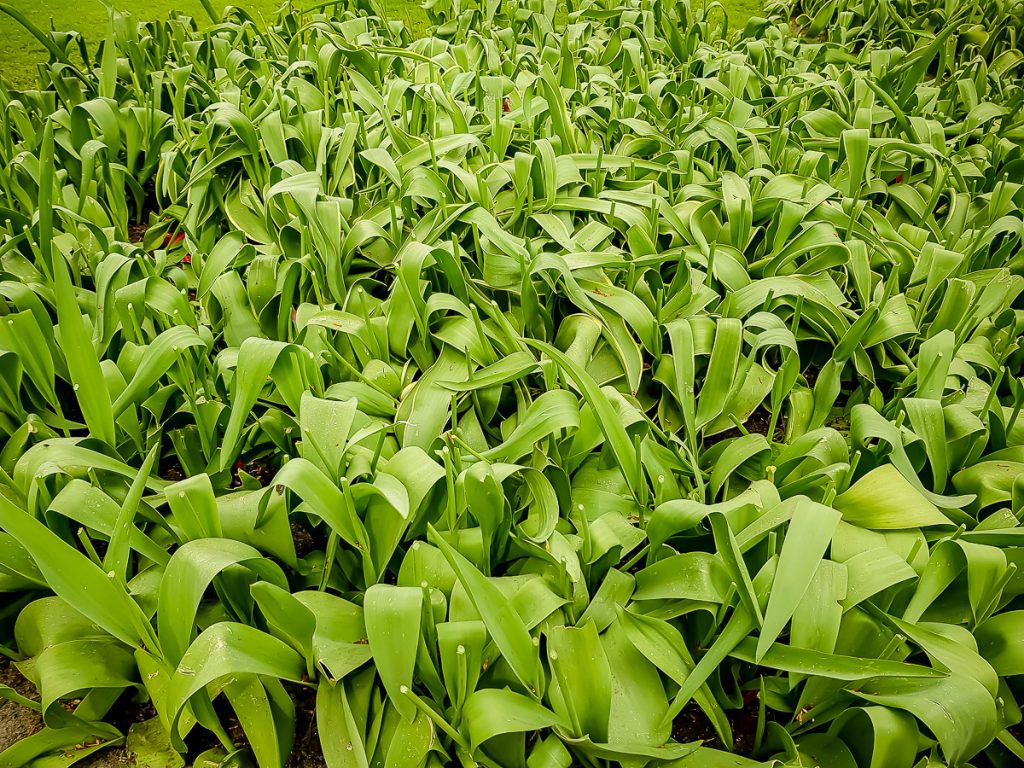
I came on the last day of April and, in some places, the tulips were already cut (they cut them, they do not let the stem dry, because this tires the bulb. So it grows, they take it out in the summer and… I don’t know the process further 🙂
There are 150 species of tulips and 3,000 varieties in the world. The truth is that what I saw here in the park surpassed my imagination!
If you are a fan of tulips, you’ll die of so much pleasure here. If you don’t like flowers and your girlfriend/wife has brought you here, take some painkillers beforehand, because you have a lot to see and you will be dizzy.
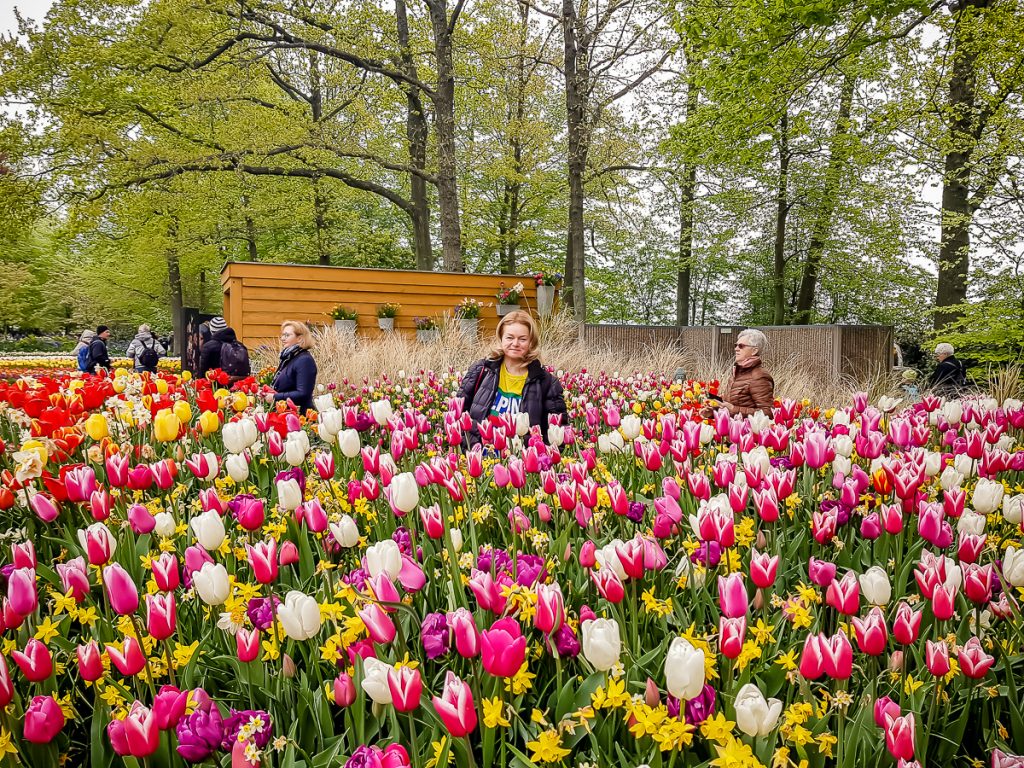
The park is very beautiful, so you don’t get bored. And, when you say you’ve seen them all, there’s another kind of tulip that surprises you.
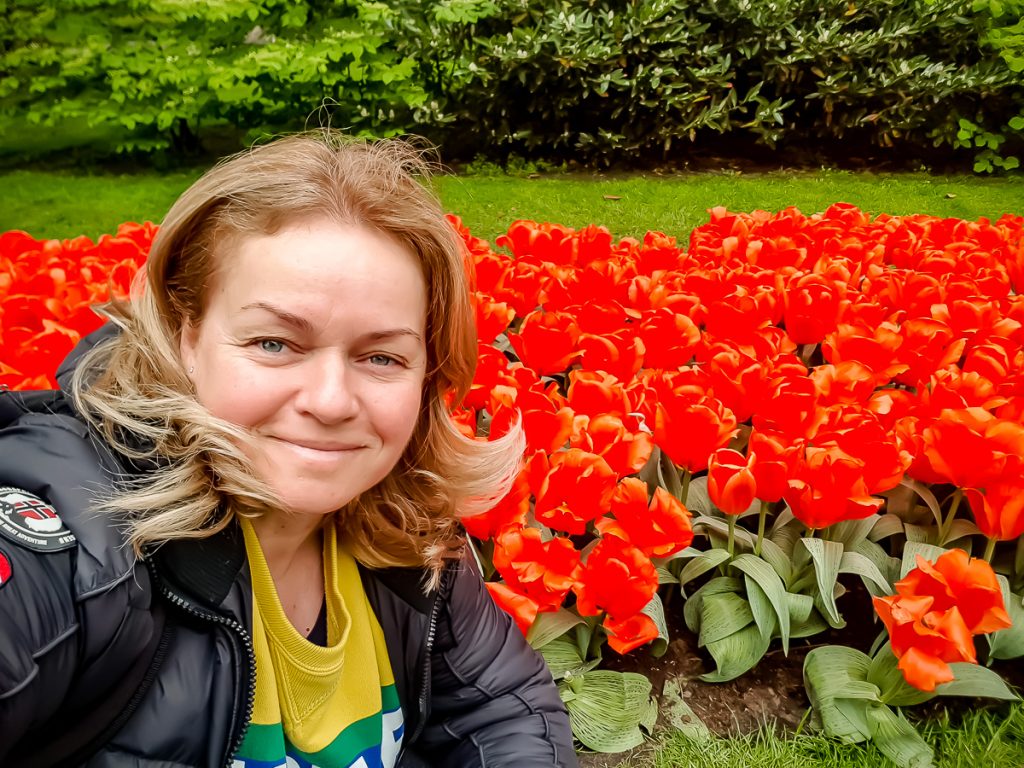
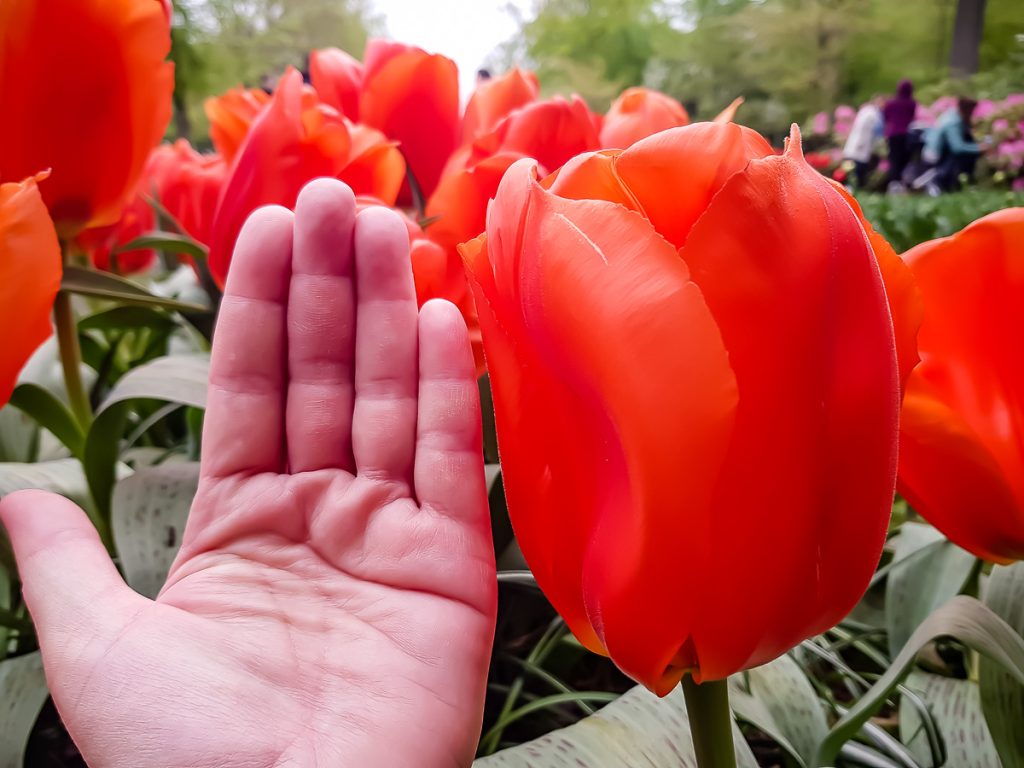
The Giant Orange Sunrise Tulip. The truth is that I have never seen a tulip with such a big flower in my life! I kept trying to make it visible in the photo that it was as big as a baby’s head…
I thought about going to our florists to look for it, but the sellers will be scared when I ask for: “a huge orange sunrise bouquet”.
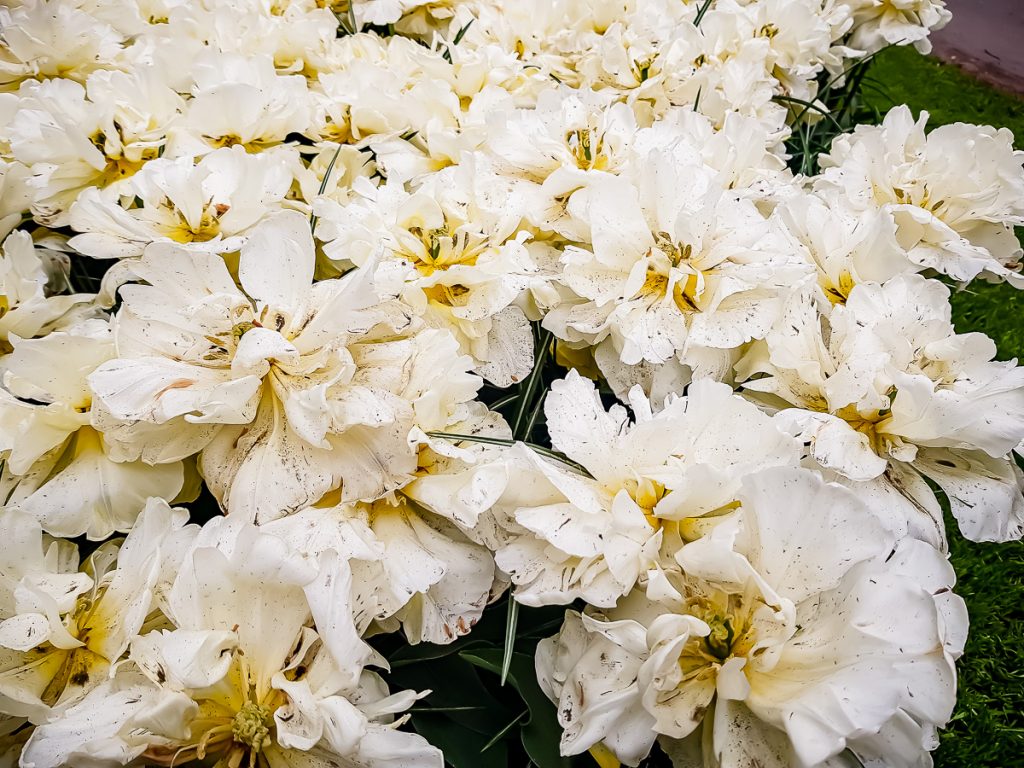
The Avant Garde Tulip. So disheveled! It looks as if exploded…
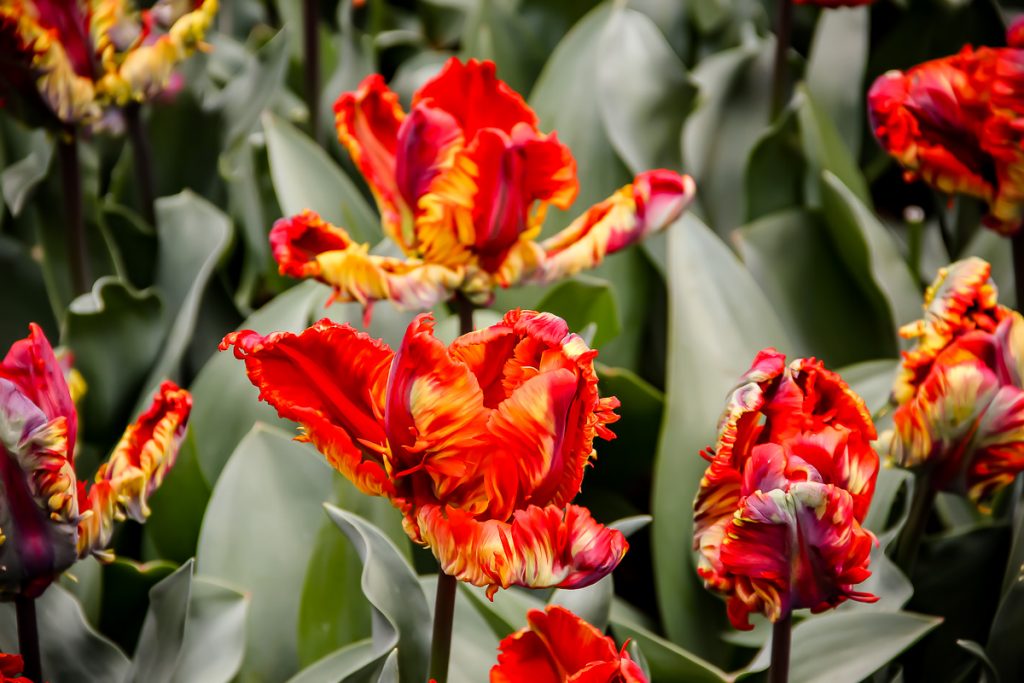
One of my favorite in the park: Rasta Parrot
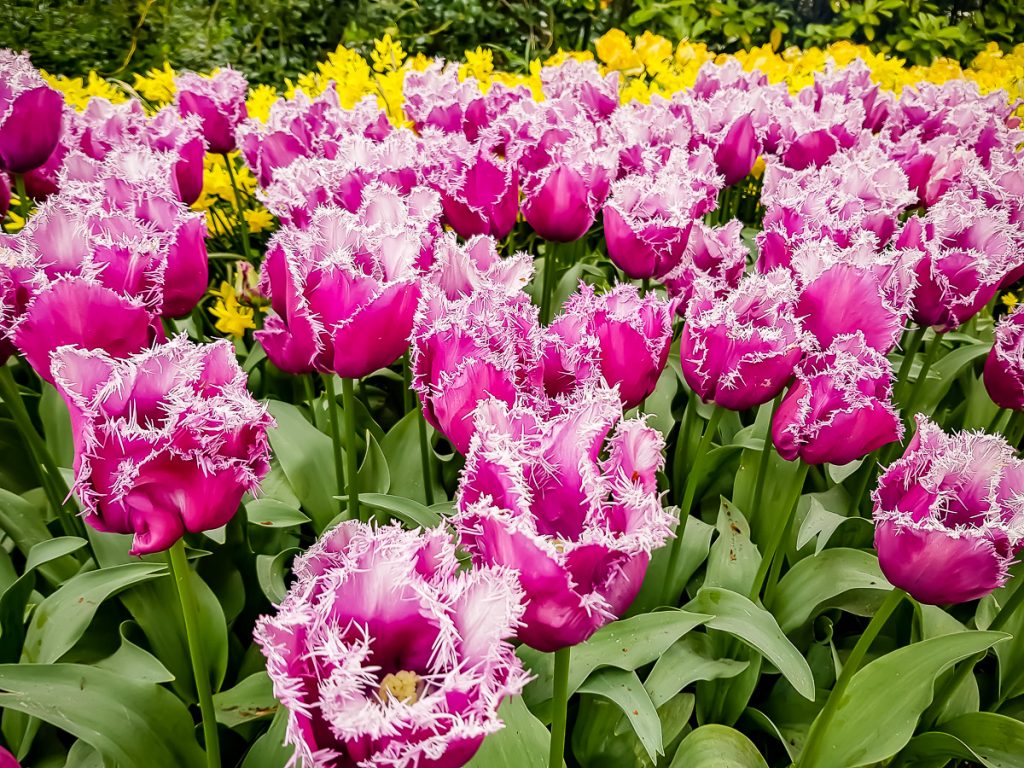
Reine de Lairesse Tulip
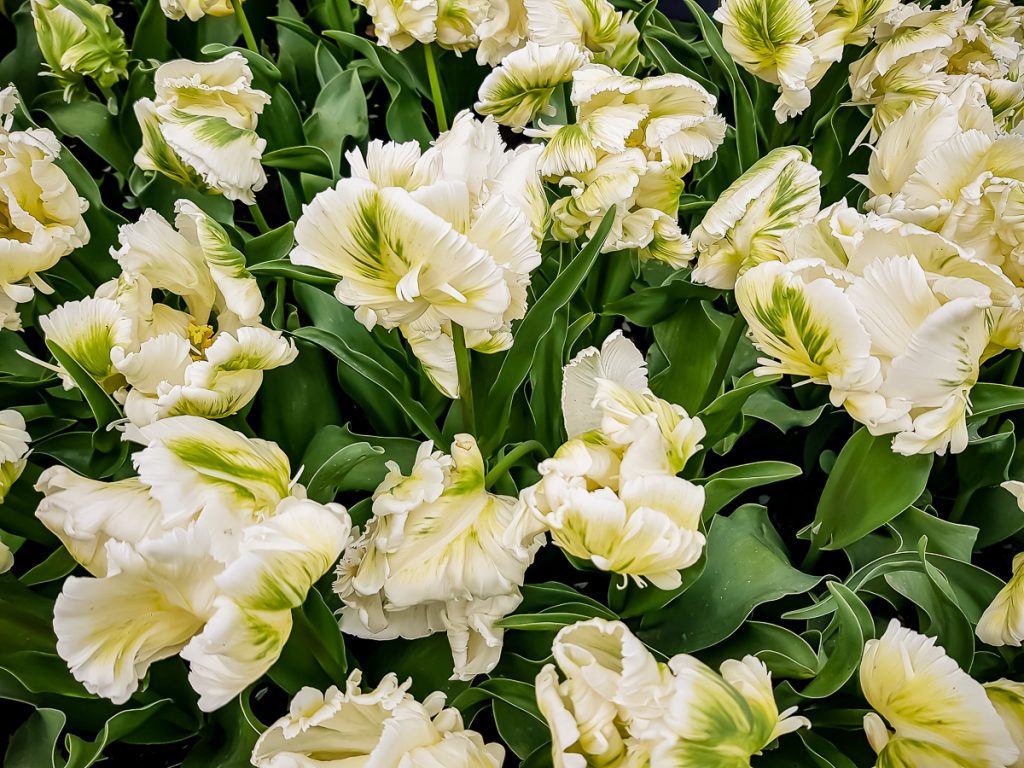
Super Parrot Tulip
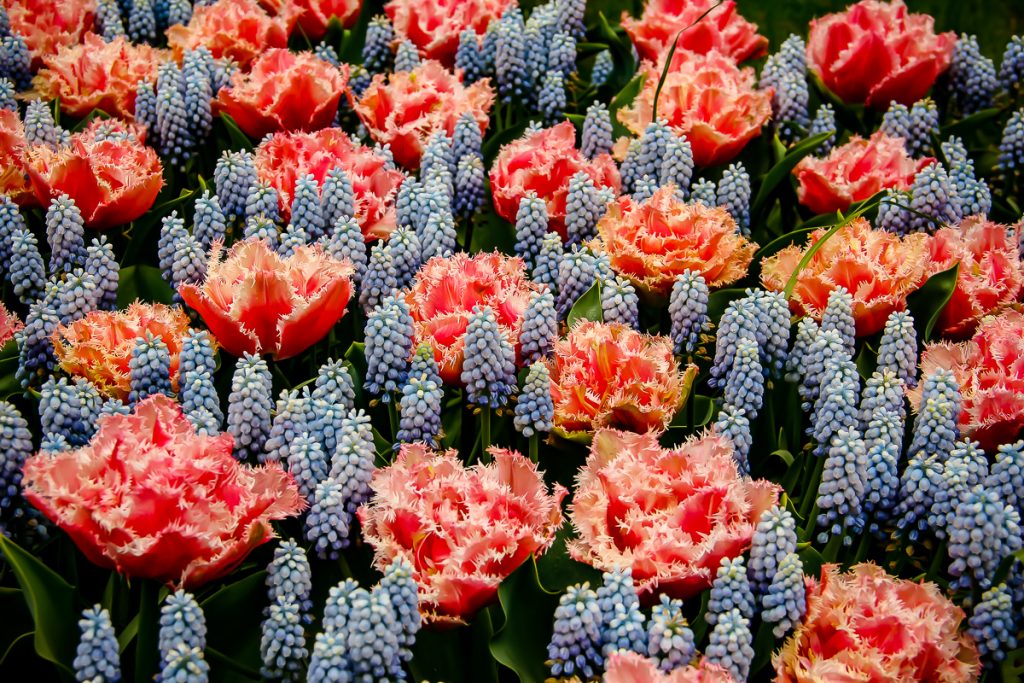
Queensland Tulip
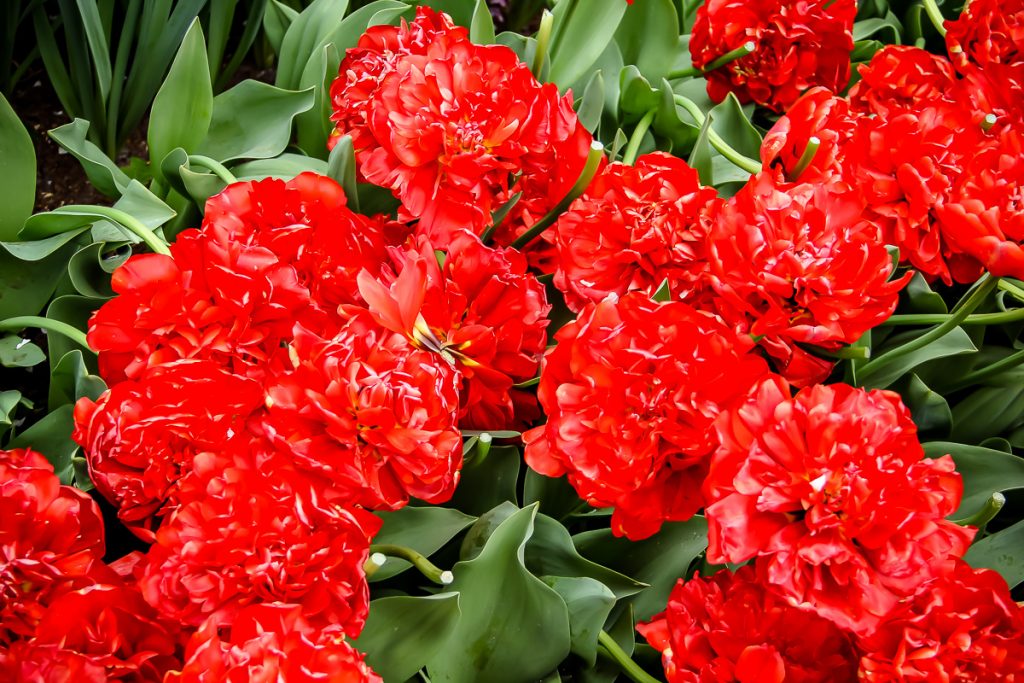
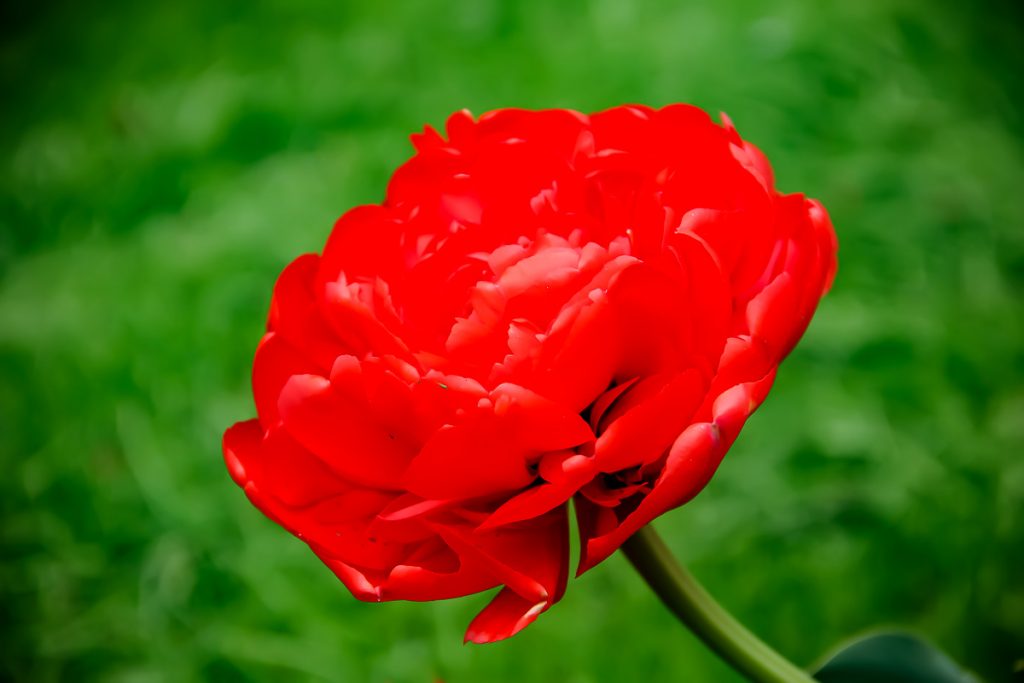
The Miranda tulip, which immediately made me think of our peonies. By the way, did you know that peony is our national flower? I had no idea!
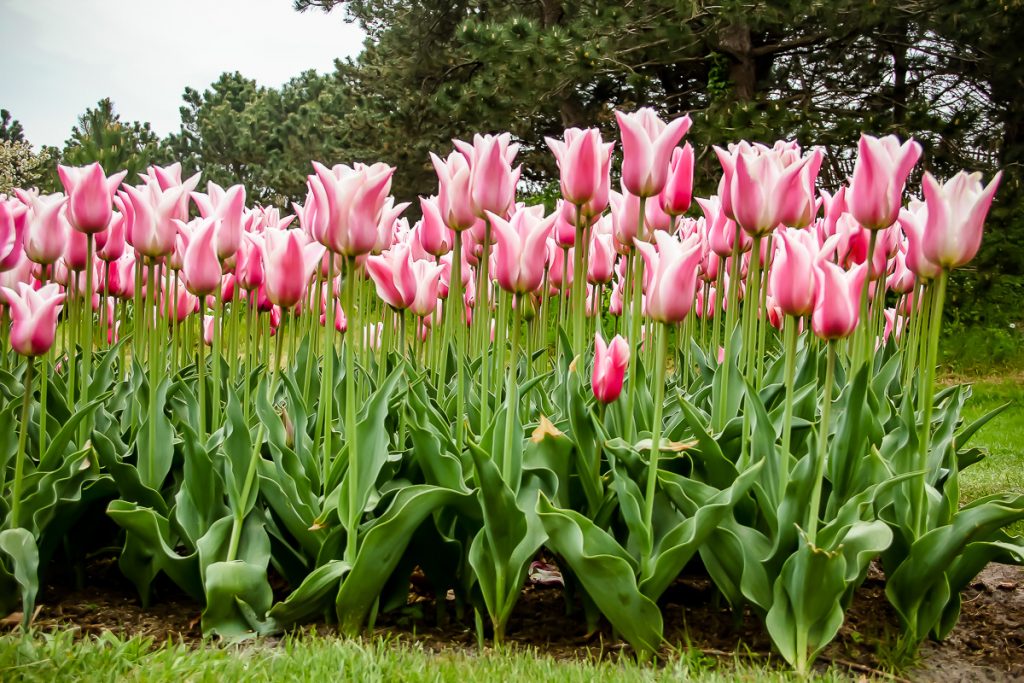
I don’t know what this tulip is called, but I think it’s something like Everest, because it has a shocking height! I think the tallest ones get up to my belly button!
I walk in all directions, on all the main, secondary, straight, circular alleys and I still don’t know if I manage to see all the tulips.
I’m taking selfies one after the other. What calms me down is that everyone in the park is desperate to take pictures of the tulips and selfies. I’m not the only one…
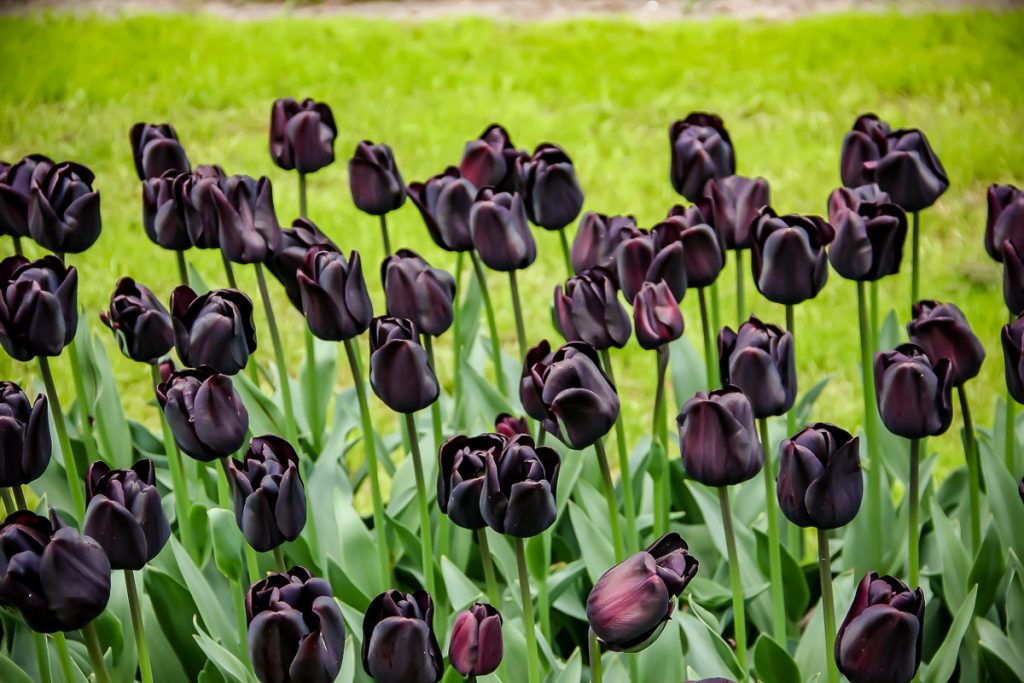
Beautiful black tulip, right?
Well, there is no such thing as a “black tulip”. The darkest in color is, in fact, a hybrid from red tulips. So what, can’t we call it the “black tulip”? 🙂
The one I came across in the Keukenhof is called Nightwish.
I find out that the rarest tulip is the blue one. Hm, I think that the ones I saw in Bucharest, sold by some flower-girls, are colored with ink…
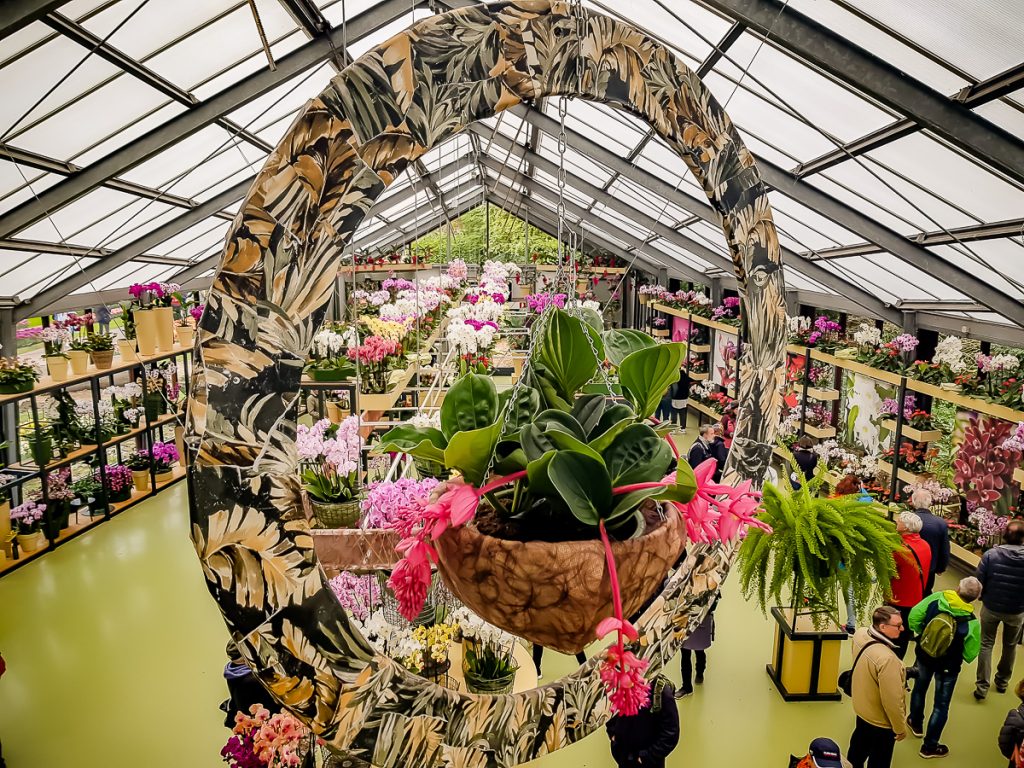
When you get tired of tulips, you can enchant your eyes with other flowers. There are several pavilions scattered around the park, where you can find a variety of flower exhibitions, unique arrangements, and where you can buy all kinds of flower stuff, of course.
Most of the time I spent at the orchid pavilion, called Beatix (royal name). Beautiful varieties, beautiful arrangements, a good source of ideas for your own apartment. If you have a big one…
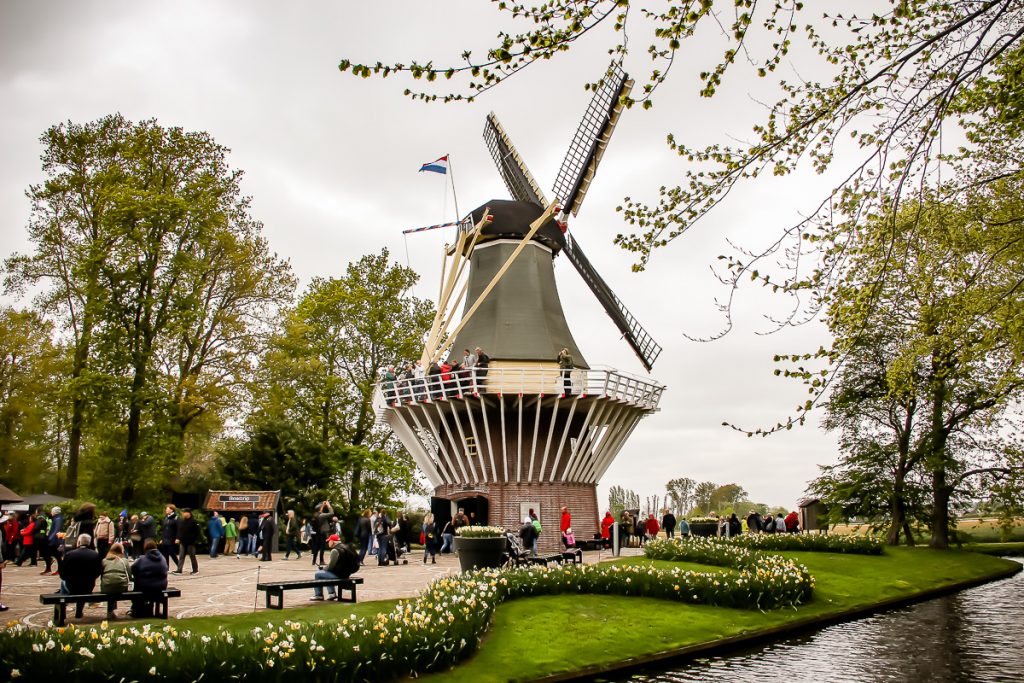
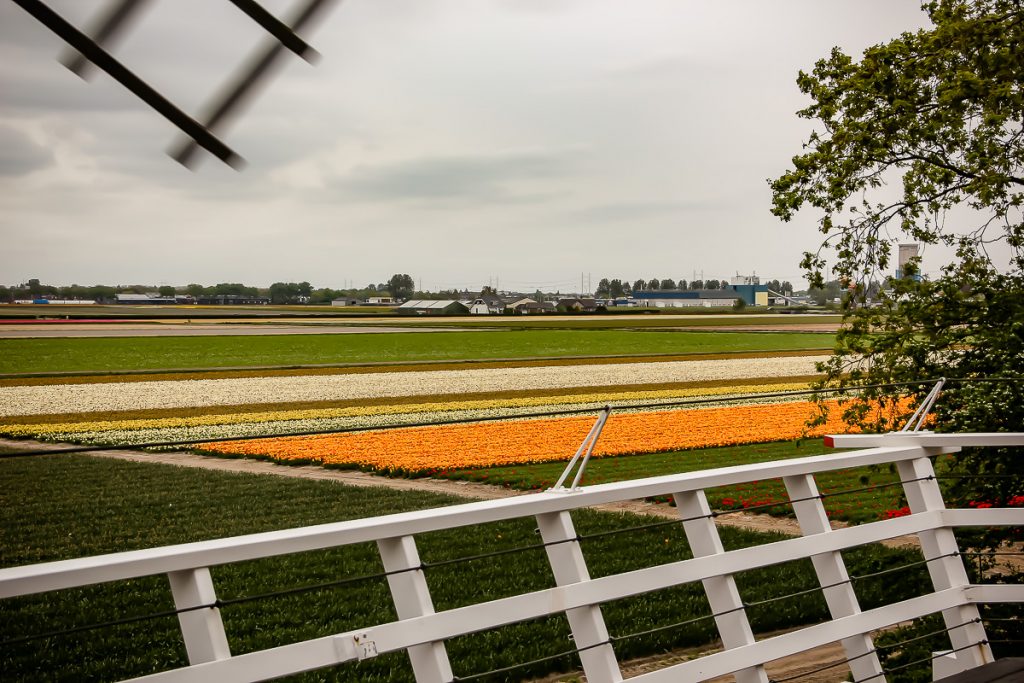
The mill is an important landmark on the park map. I had heard from the beginning “you have to get to the mill, go up to see the tulip fields”. Could I have not gone there?… Anyway, I couldn’t miss it, because at some point it appears on your way among the tulips.
Climbing up to the mill did not impress me much, because those long-dreamed fields were not there, all full of tulips. Only a few were in bloom. I don’t know if it was too early for some varieties or if they had already been cut.
Near the mill there is an area with souvenir shops, with food stuff, a place where you can sit on very nice benches to rest your feet, not your eyes, as there are tulips here too.
I didn’t rest them, because I had some comfortable clogs:
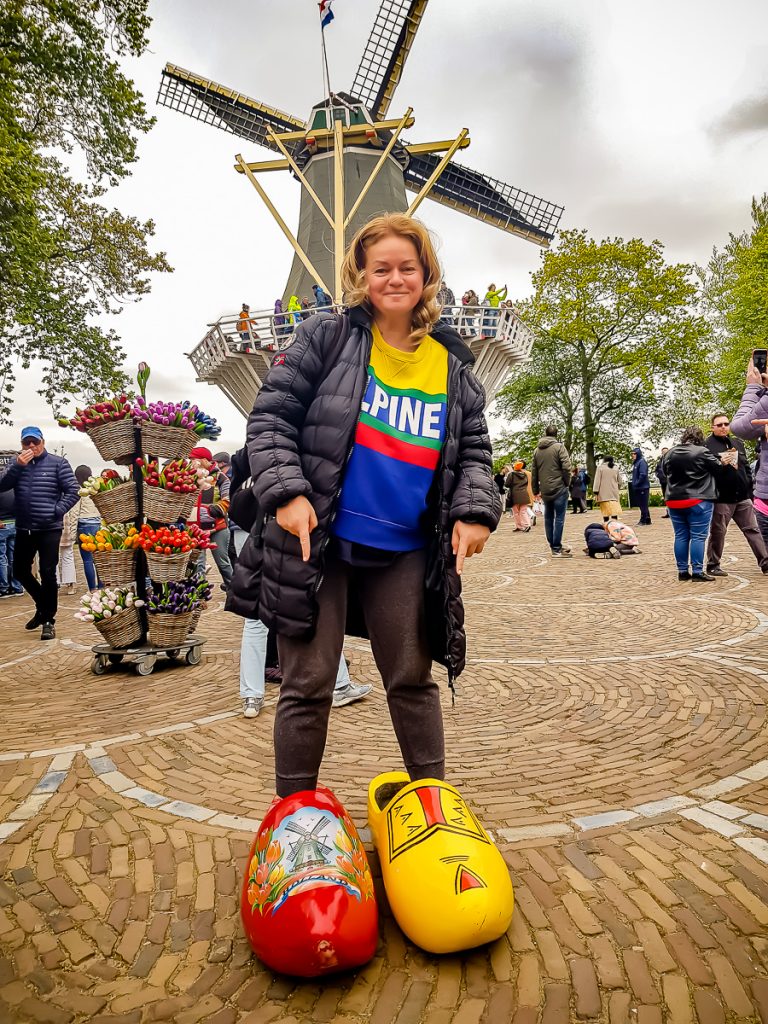
My new Louboutin shoes from Holland hihi. And let’s go, man! I was only halfway there.
After about two hours in the Keukenhof, I couldn’t see straight:
Tulips, pavilion, tulips, souvenir shop, tulips, another pavilion, tulips and… wait, some loud music to be heard over a few groups of tulips and trees. I thought it was going to be a children’s show, some magic, I couldn’t see what it was.
When I arrived in “the clearing”, I saw what it was:
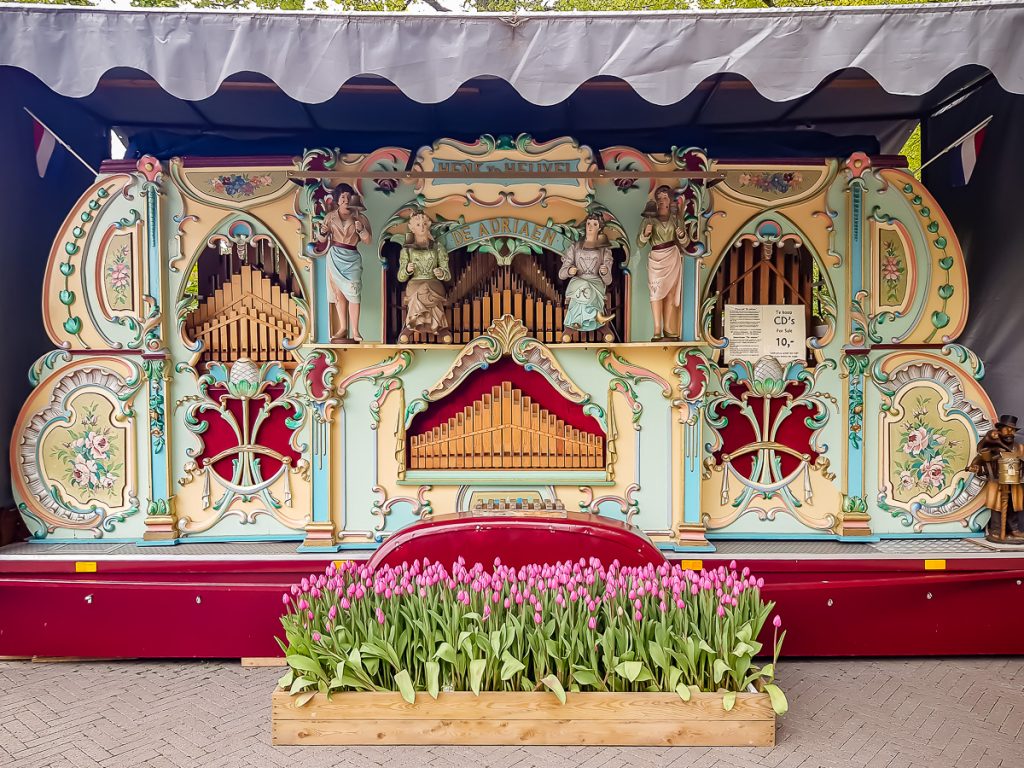
A huge, beautifully crafted music box gathered people in front of it. So I stood there, watching each element, then I realized that I could see the mechanism behind too, which fascinated me.
Well, it’s been 4 hours and tens of thousands of tulips…
I hurried to the parking lot, not to miss the bus, because the driver threatened us not to wait for us for a minute. (Update: That was exactly what happened!)
In almost an hour’s drive, I realized how many tulips I had photographed in the park:
And also during this hour, on the way to Amsterdam, I tried to understand why in this park I did not come across bee, fly or another flying creature. I haven’t succeeded yet.
AMSTERDAM
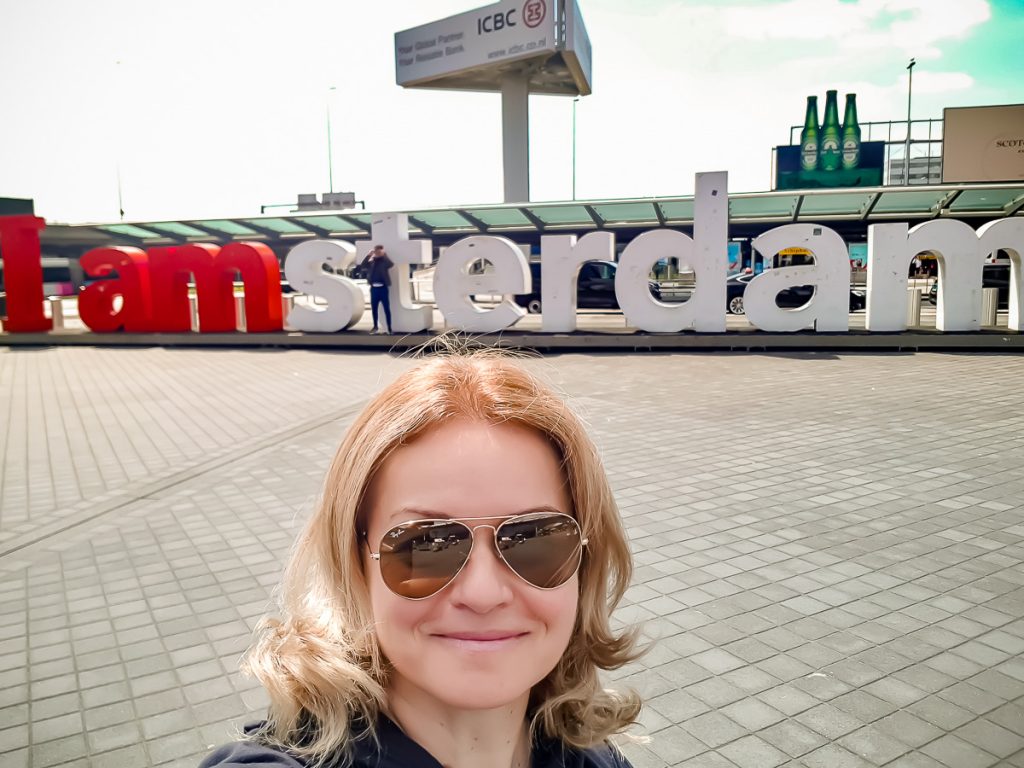
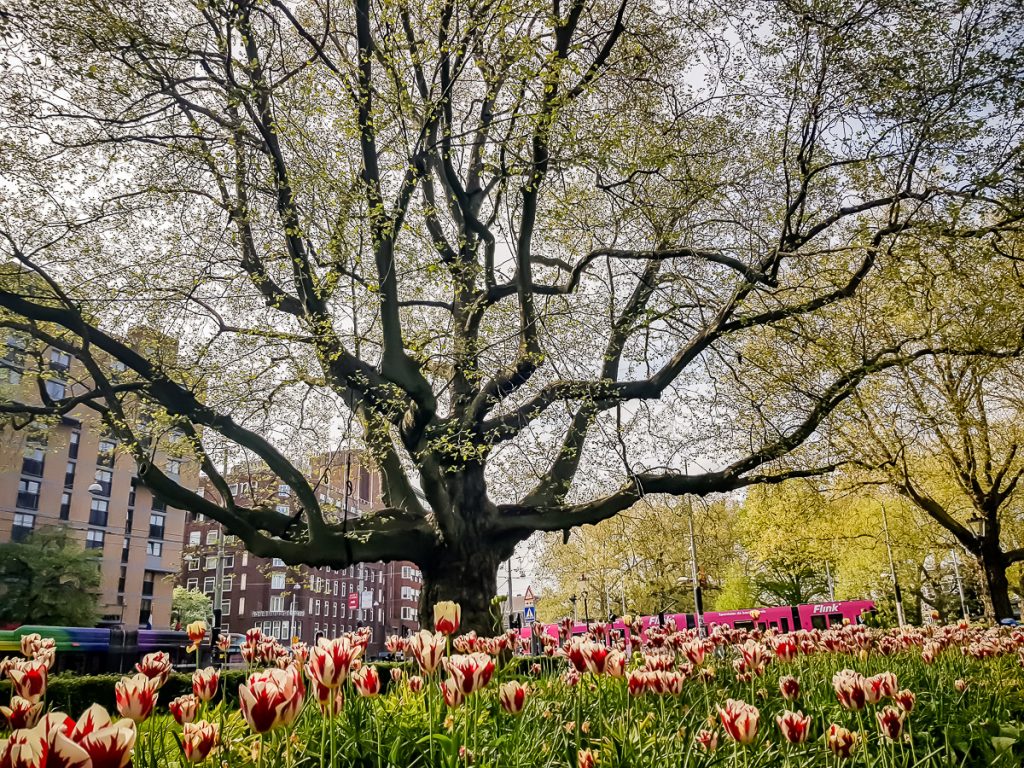
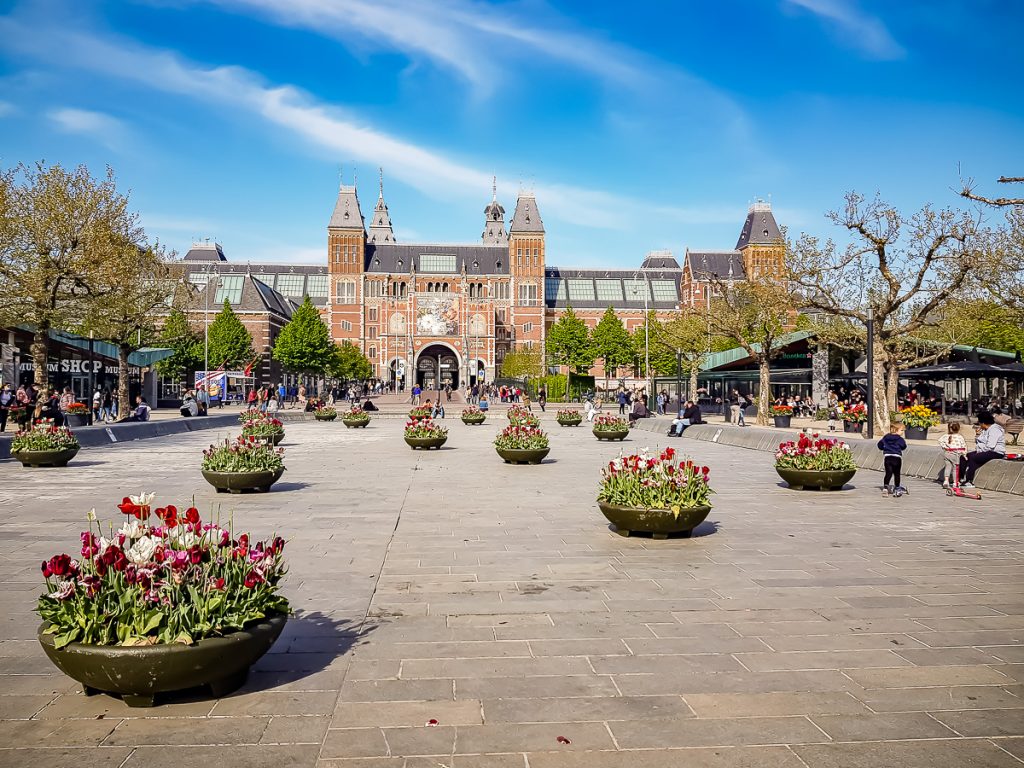
I like that Amsterdam doesn’t miss the beat when it comes to tulips. Wherever possible, tulips were planted. It’s a really cool picture of the city in the spring!
However, I can’t wait to go on the road again, to admire the tulips as much as my eyes can see!
TULIP FIELDS
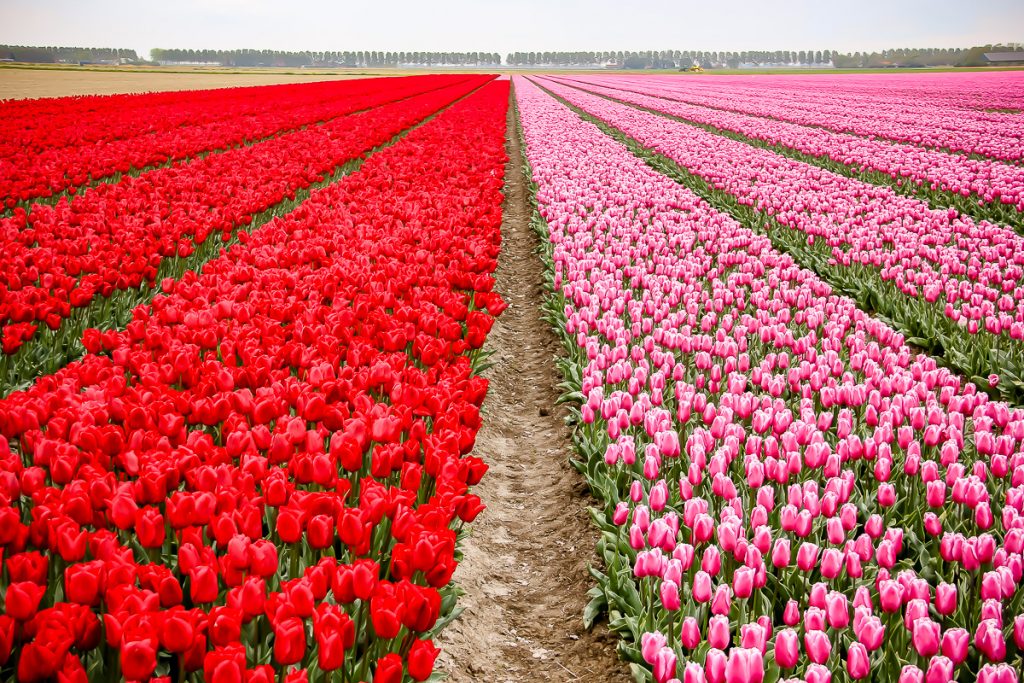
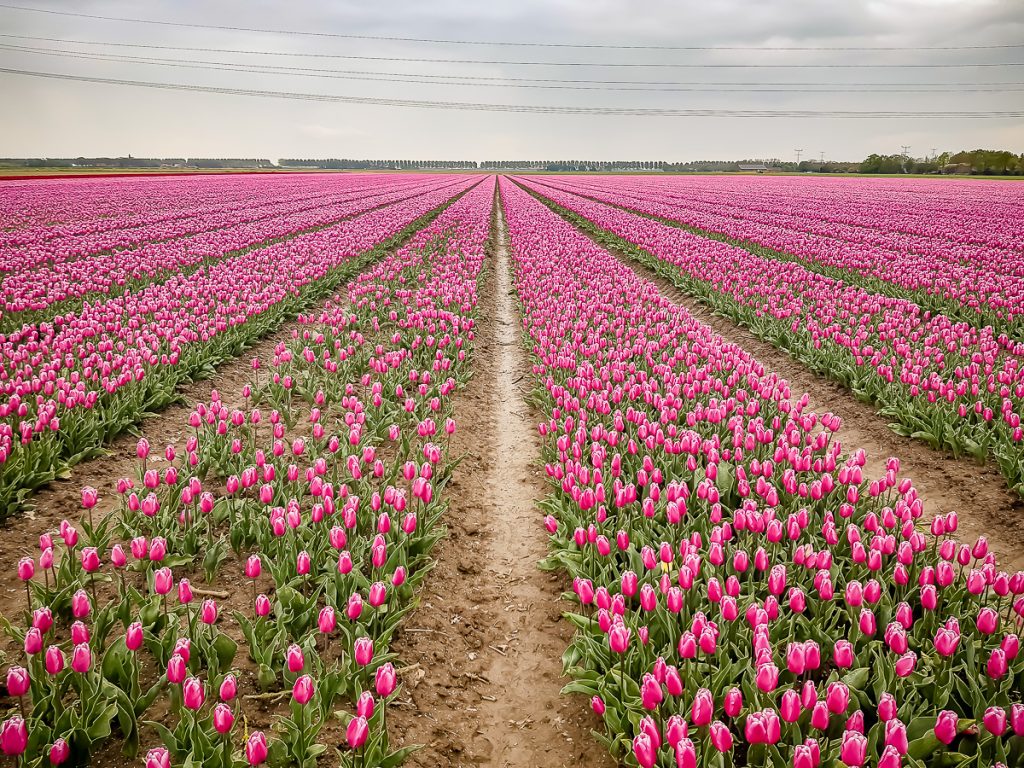
My cousins in the Netherlands took me to see some cool places near Amsterdam.
On our way we came across some tulip fields. You can’t stop anywhere, they are not all close to the road, but where we saw that we could park on the side of the road and freely enter the flower fields, we stopped, of course!
We came across some fields with pink and red tulips.
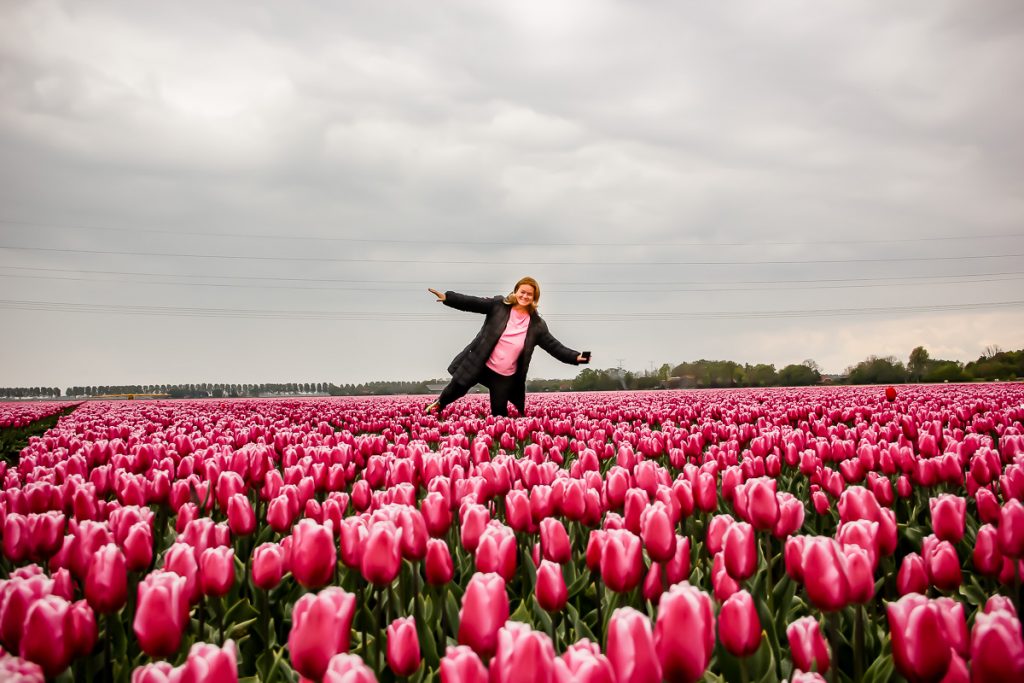
Nobody asked us anything, there was no guard dog or scarecrow for tourists, so we played around, taking selfies, filming, photographing tulips.
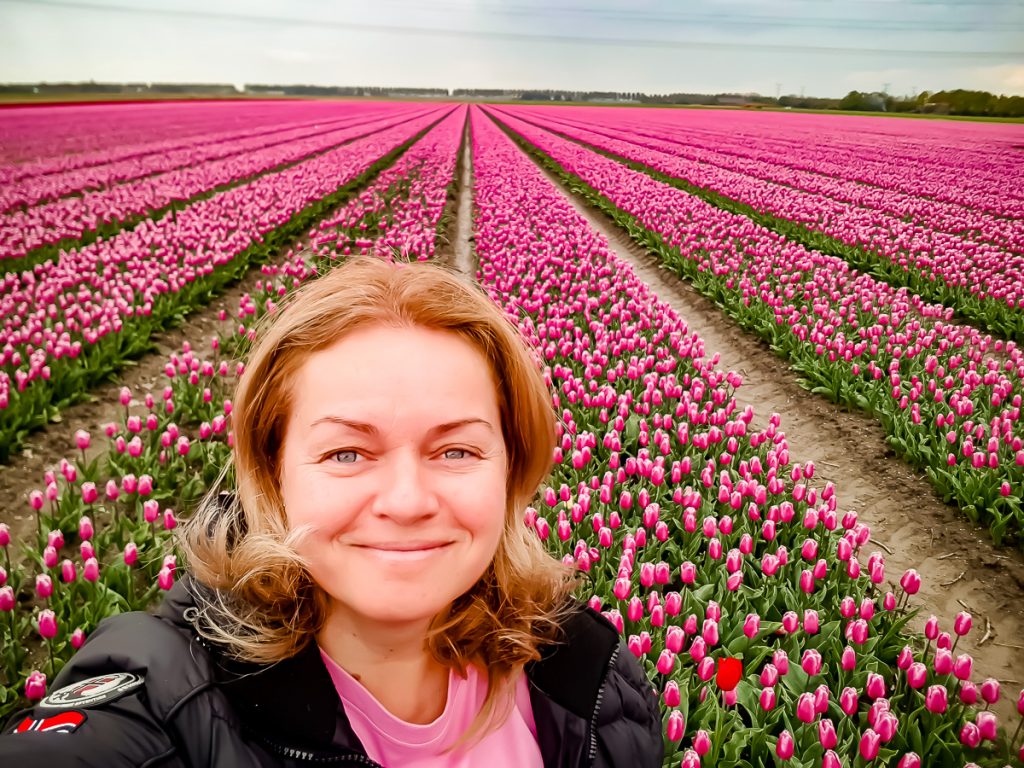
To be honest, I found the huge tulip field more impressive than any tulip arrangement, in the park. I don’t know, you kind of feel different here. It’s as if you suddenly enter a universe of beauty! (Here comes the poet in me…)
A few minutes later another car stopped on the side of the road. They were Romanians too. And you see, none of us wanted to take any tulip or go beyond the alleys, in the middle of the flower beds. Speaking about the alleys:
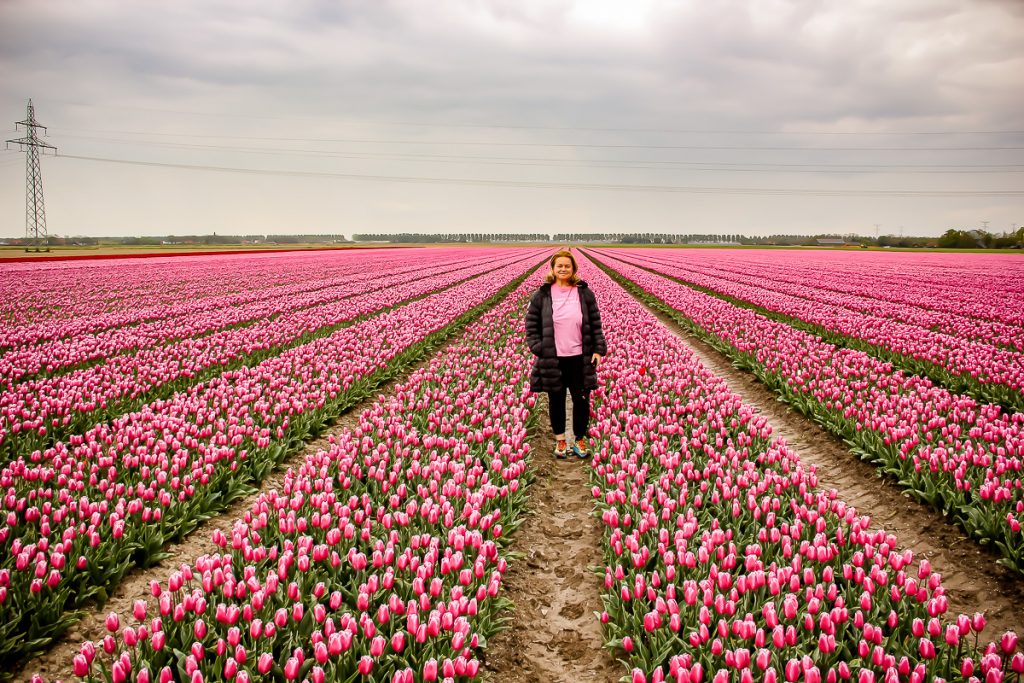
I really destroyed my shoes in the mud on the alleys… You can see how I left my marks in the soft soil, not at all friendly with the intruders.
We also passed other tulip fields. Yellow, orange, but I just didn’t match the colors there :). So we didn’t stop.
That was my tulip adventure!
I’m glad I saw them this year, I like that I found out things I didn’t know about and you should know that I plan to eat tulips, the next time.
Until then, let’s see “la vie en rose”, I’d say 🙂
